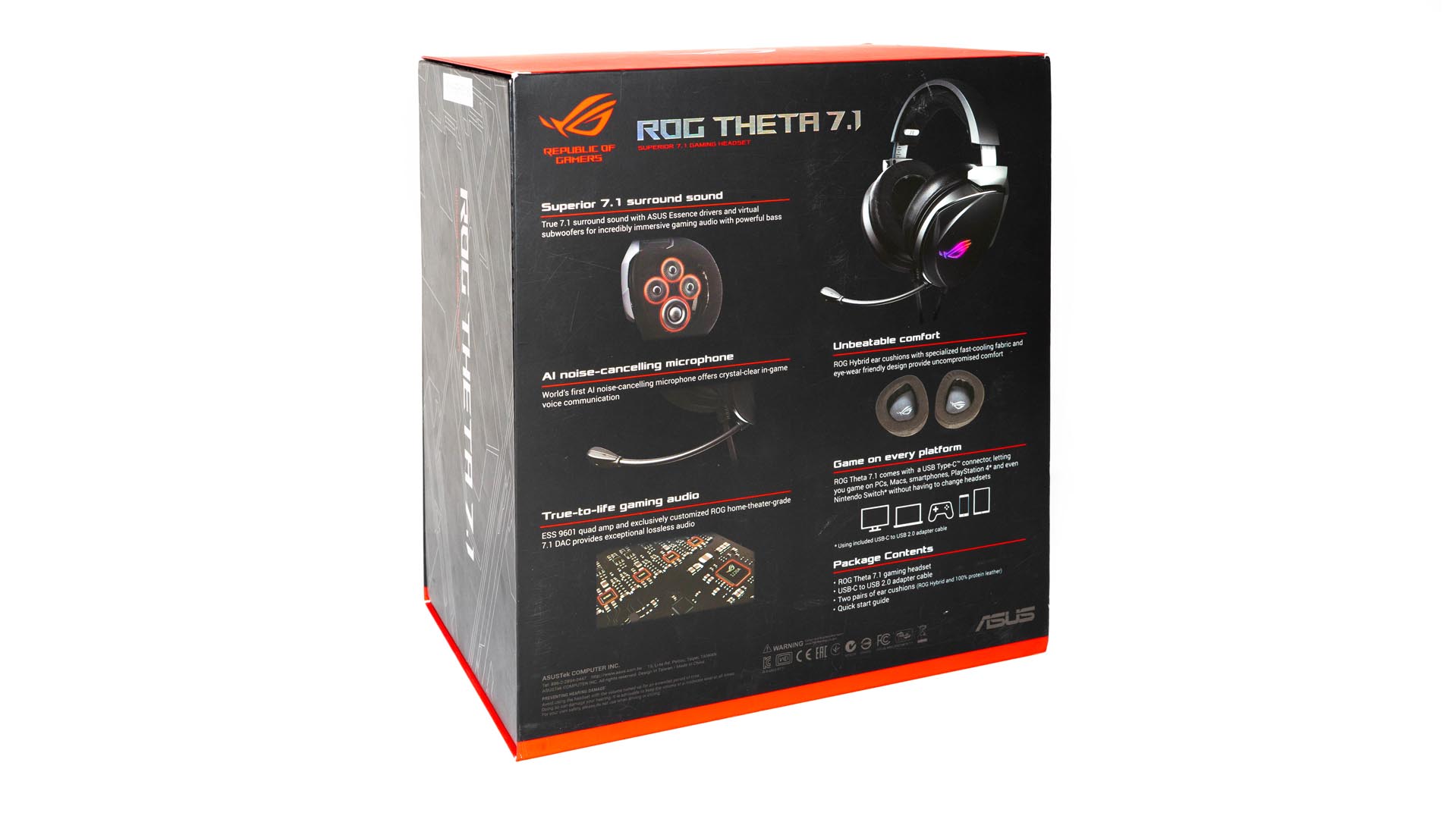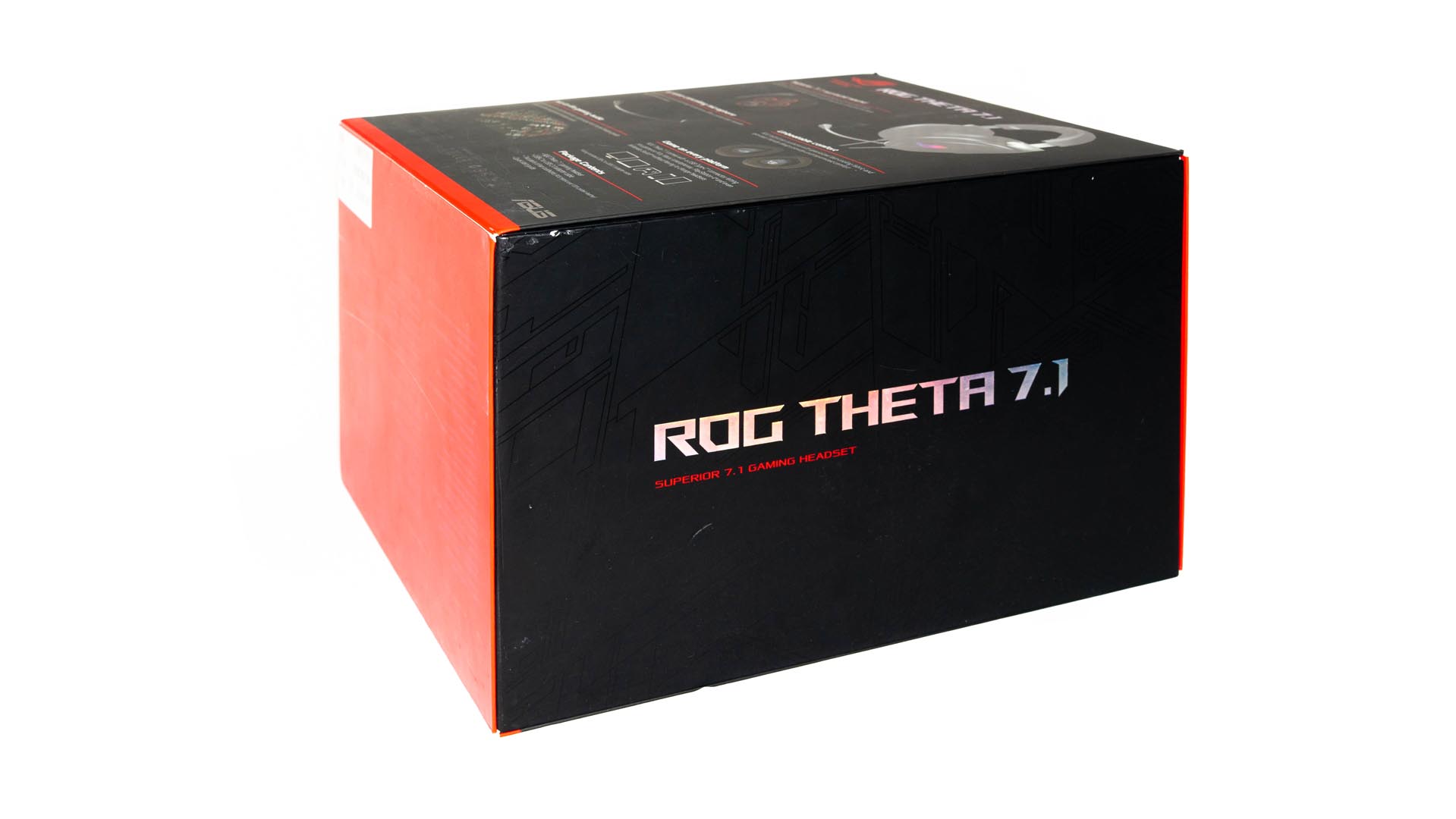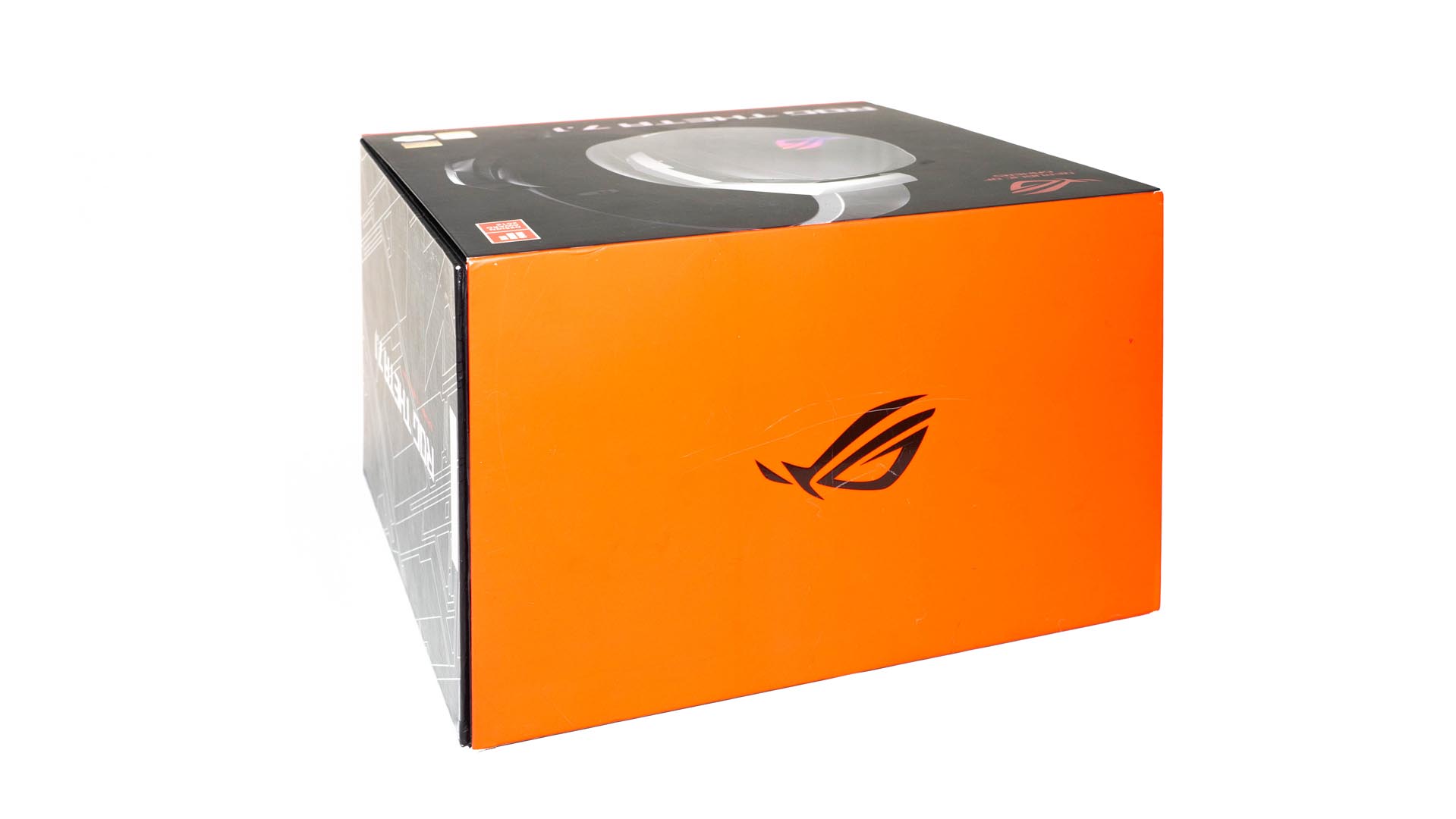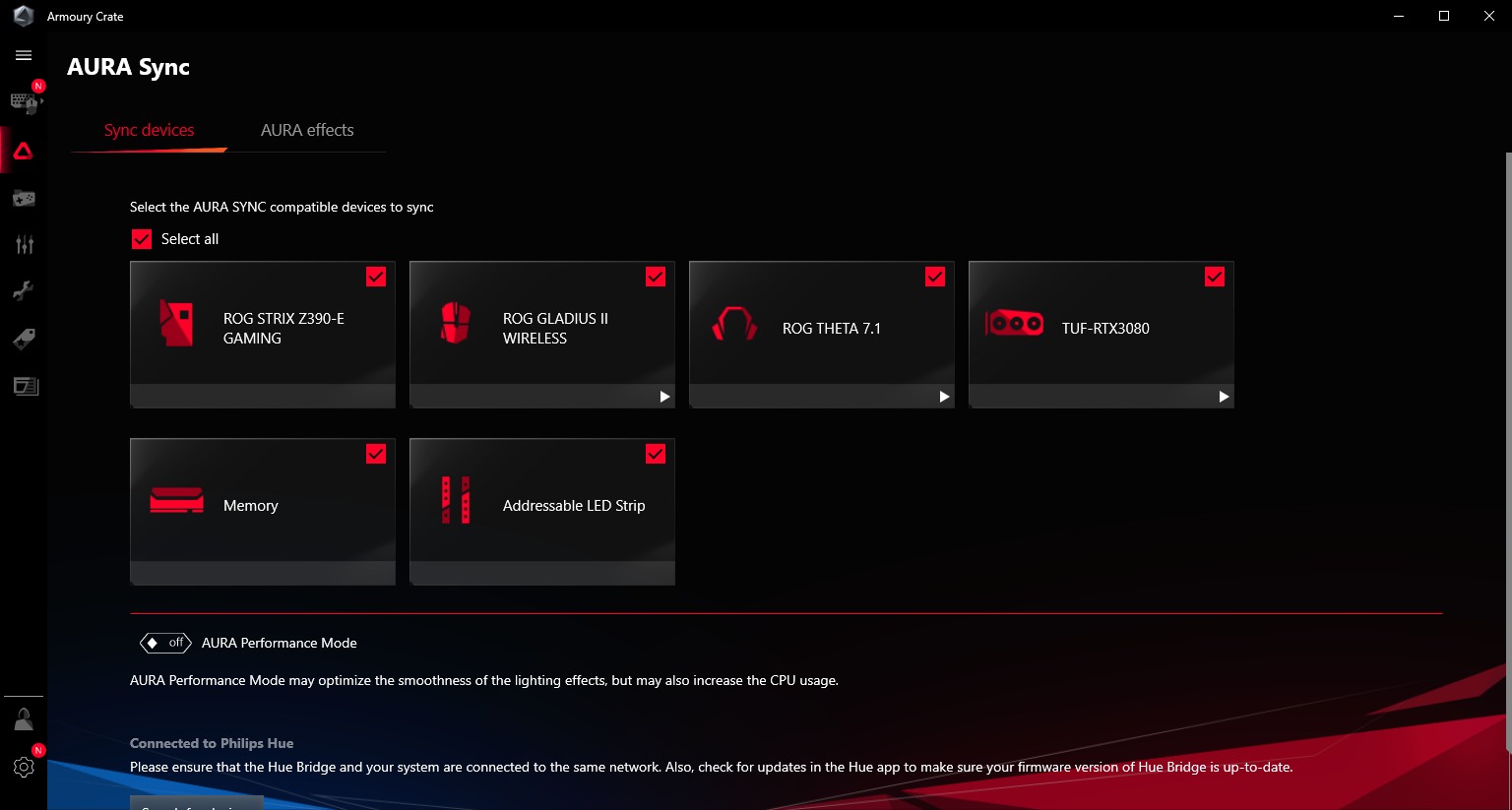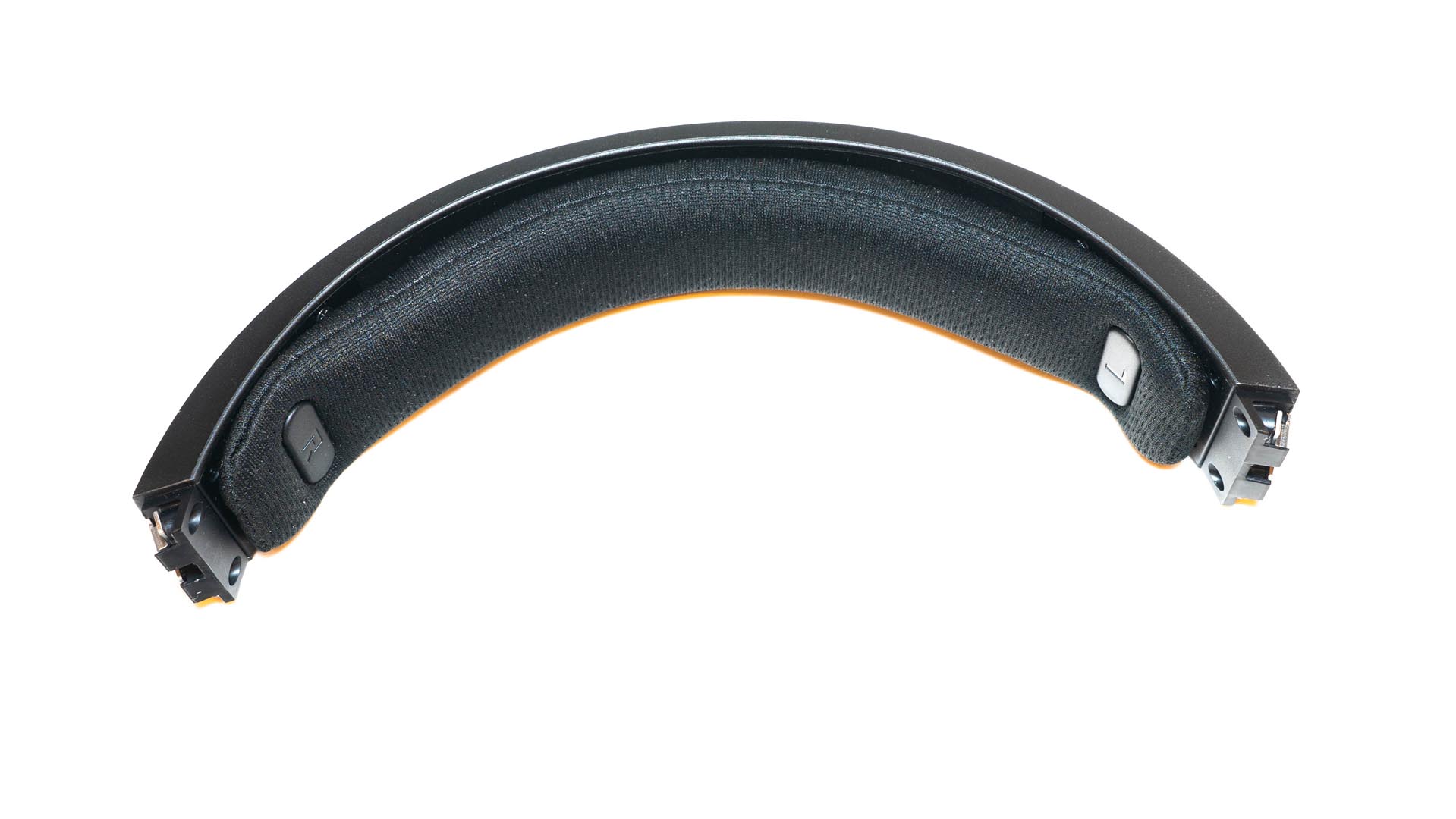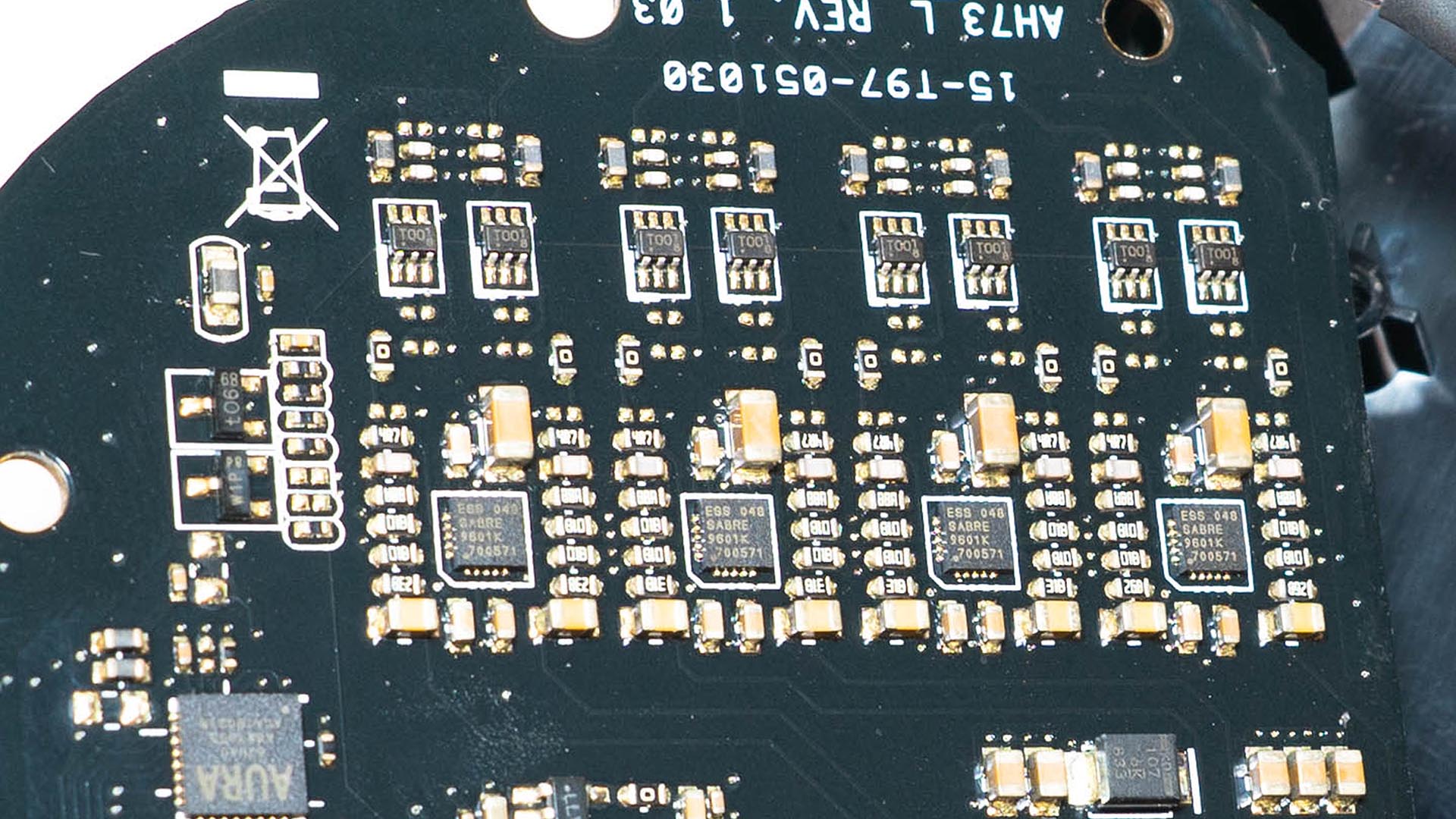Asus has been leading the way with its gaming headsets. The big ROG “Money Eye” stands for high end, class and elegance. This time, Asus has delivered their new flagship ROG Theta 7.1 gaming headset. Unlike the Strix series, which is named after the Greek letters and is as top of the range as the Maximus series of ROG motherboards, this Theta 7.1 doesn’t use a virtual 7.1 like the Strix series, but really packs in eight speakers (four on each side). What’s more, it has the luxury of inheriting a home theatre-grade 7.1 DAC and SupremeFX S1220A audio decoder chip. Instead of a single amplifier driving all the drivers, the four ESS 9601 headphone amplifiers independently transmit the channel signals to the individual units, providing a more precise positioning effect than other 7.1 products. In addition, ROG’s AI noise-cancelling microphone with black technology precisely eliminates background noise, allowing gamers to play games with voice chat or live streaming without worrying about noisy keyboards or various noises.
So, let’s dig into the detail!
The Package Appearance
The internal packaging
The black and red colour scheme is still covered in Mayan patterns, complemented by the ROG logo that can be seen everywhere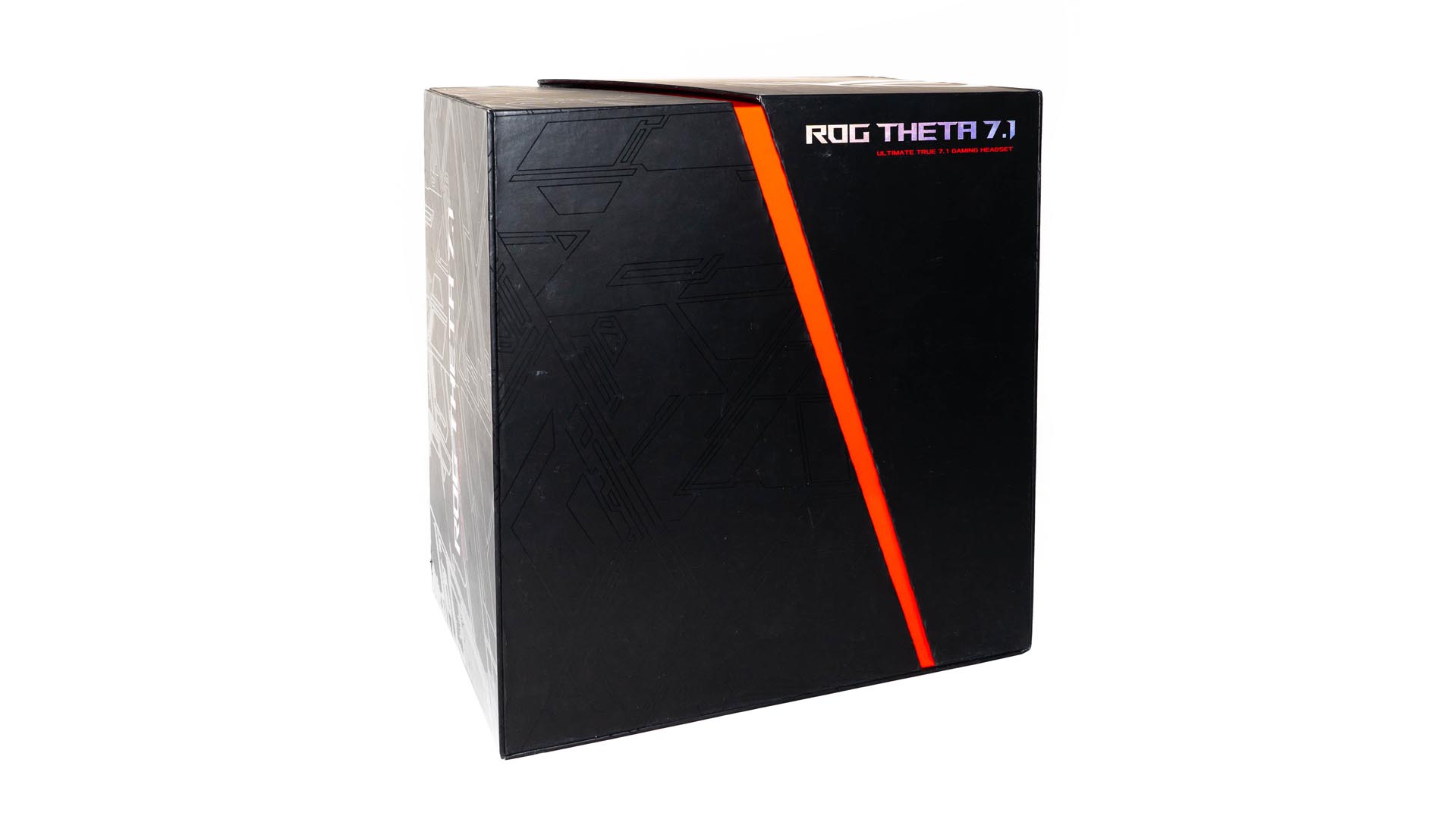
The design of the opposite door is still the flagship, with the product placed in the middle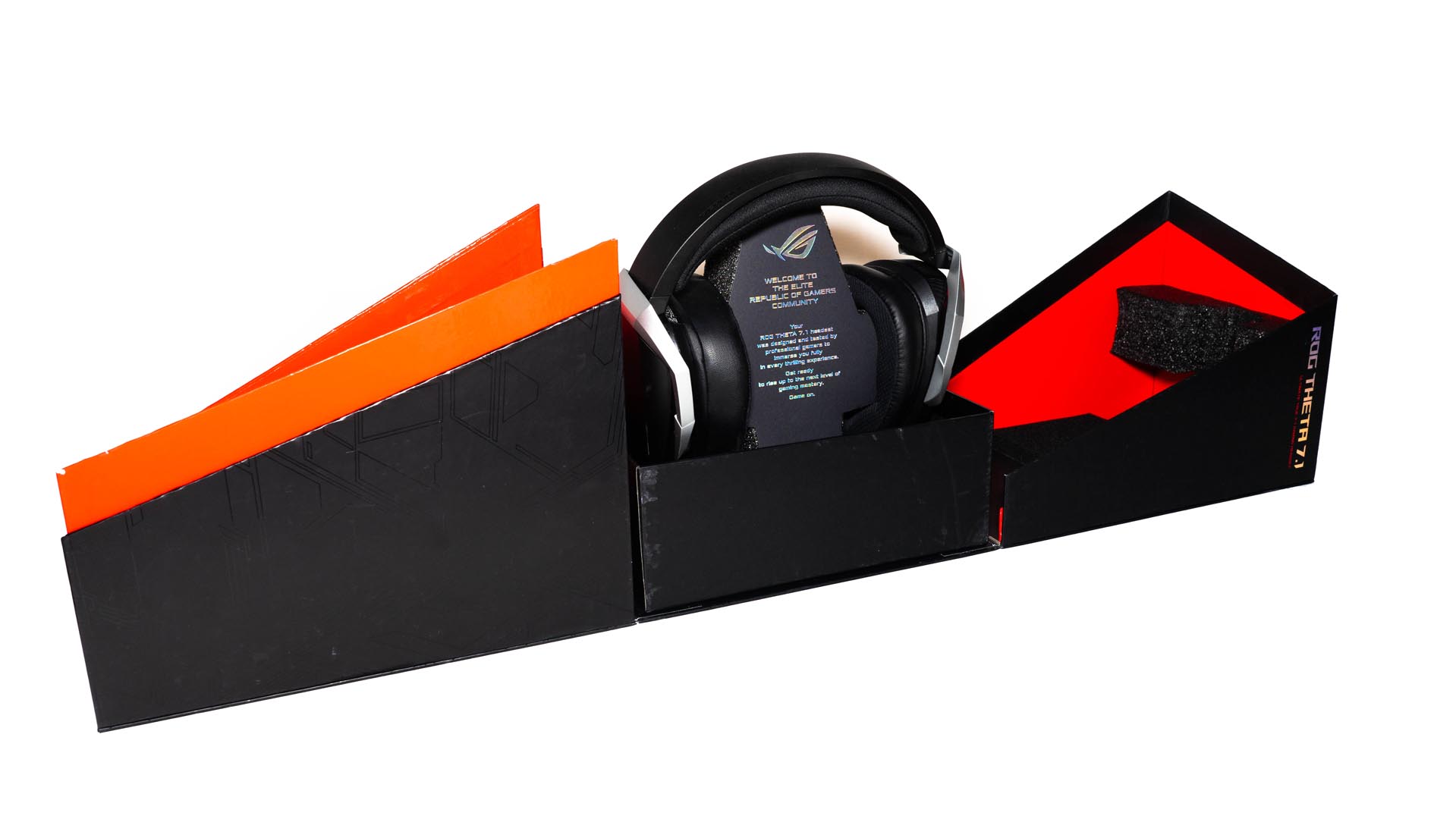
The space in the middle of the headset body is made with a monument-like design, on which players are welcomed into the elite community, full of ceremony
The contents of the accessories – includes 2 x D-shape lightweight earmuffs, a 3.5mm detachable microphone, a Type-c extension cable, an instruction manual and a warranty card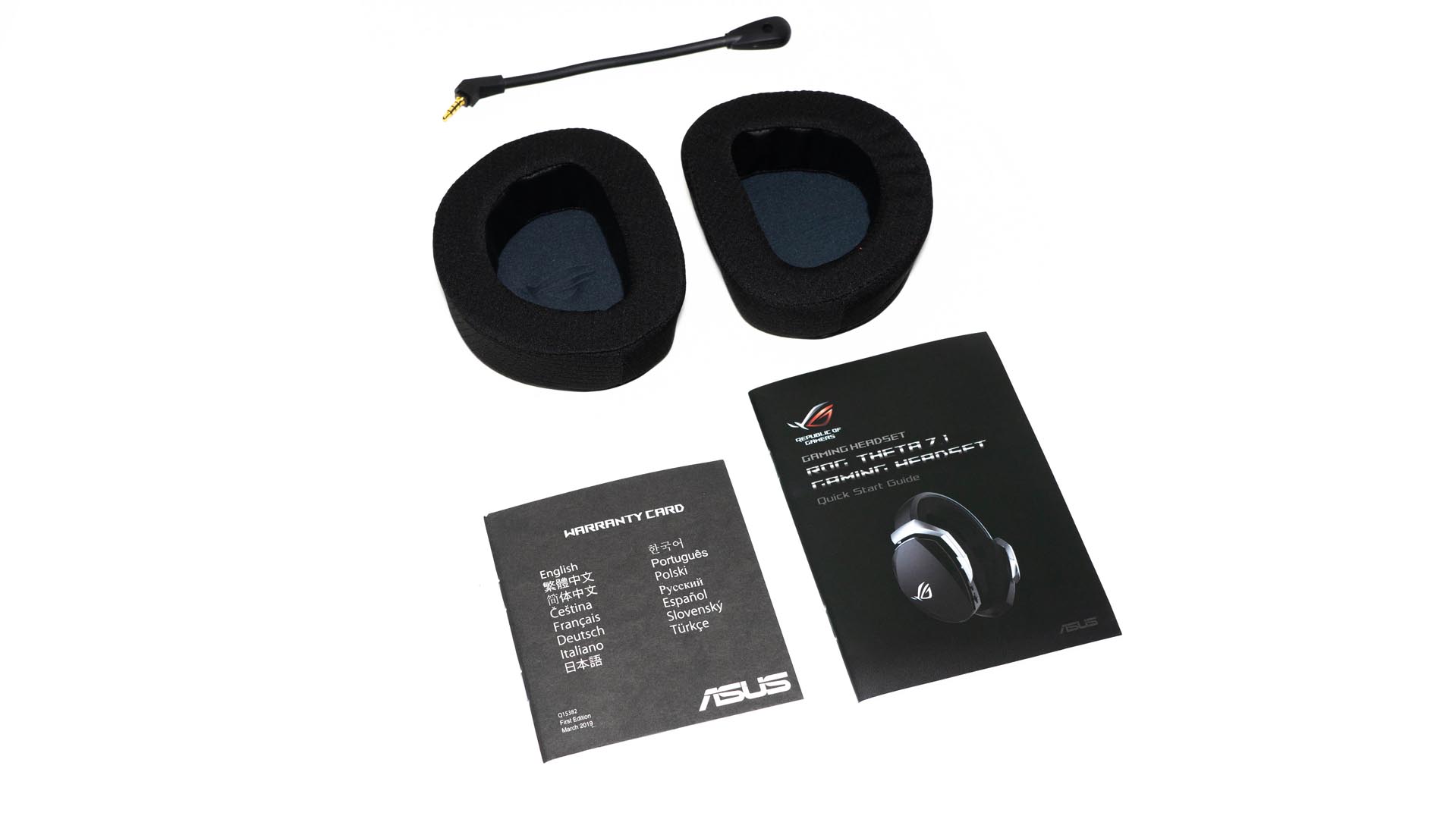

The main body of ROG Theta 7.1
The overall design combines the previous flagship ROG Centurion and ROG Delta
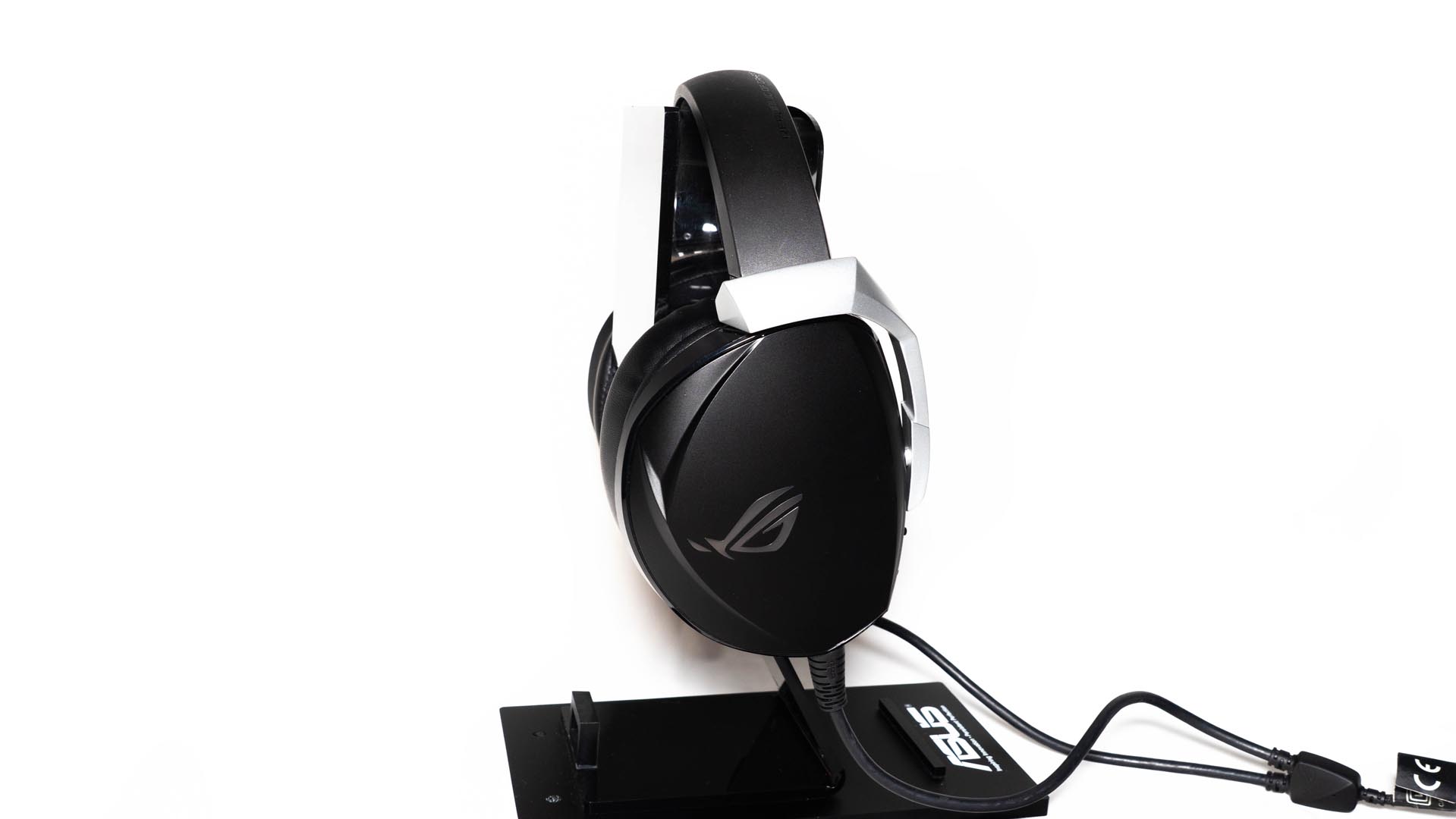
Front of the headset with microphone
Two sides of the headset with microphone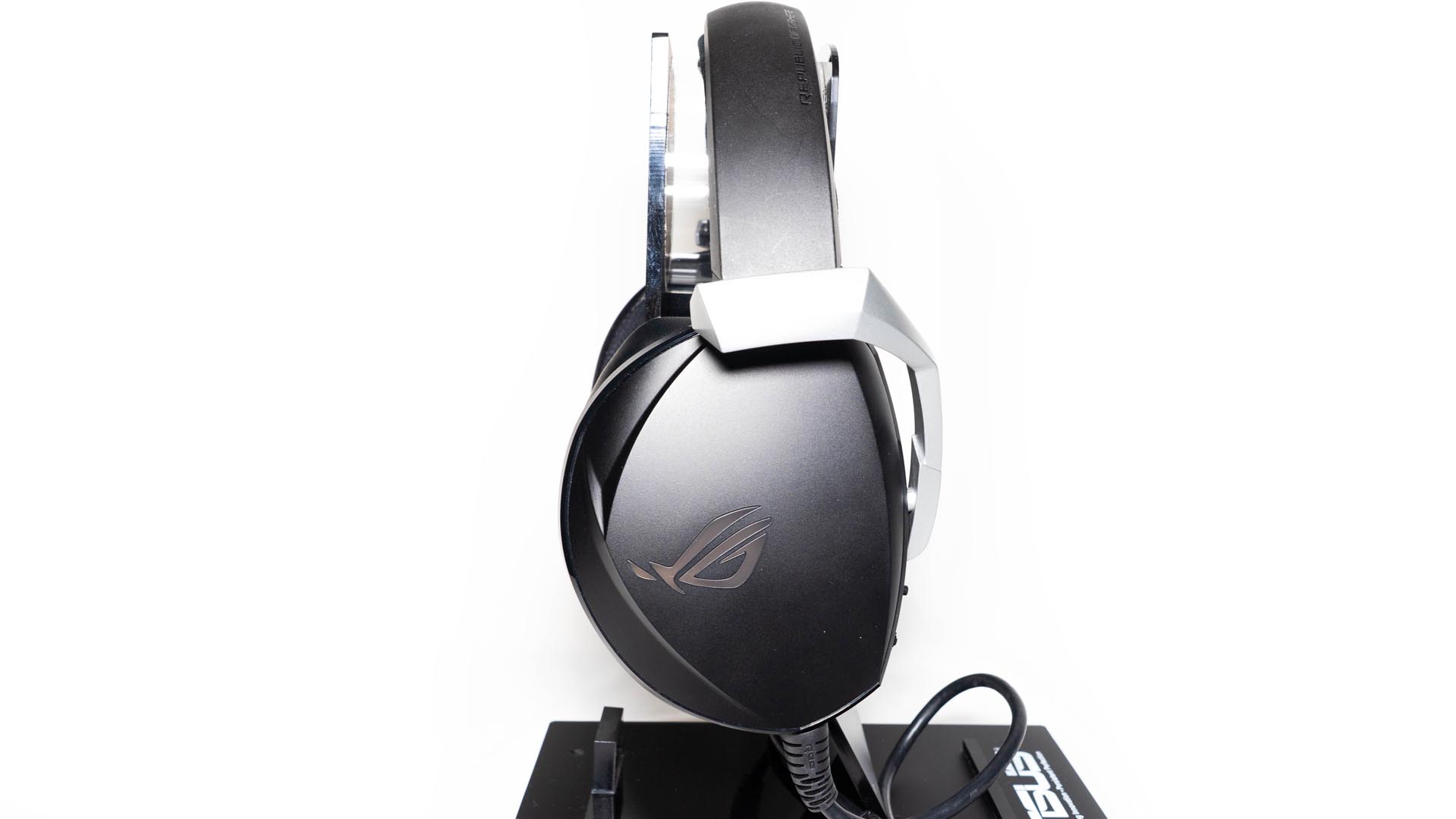
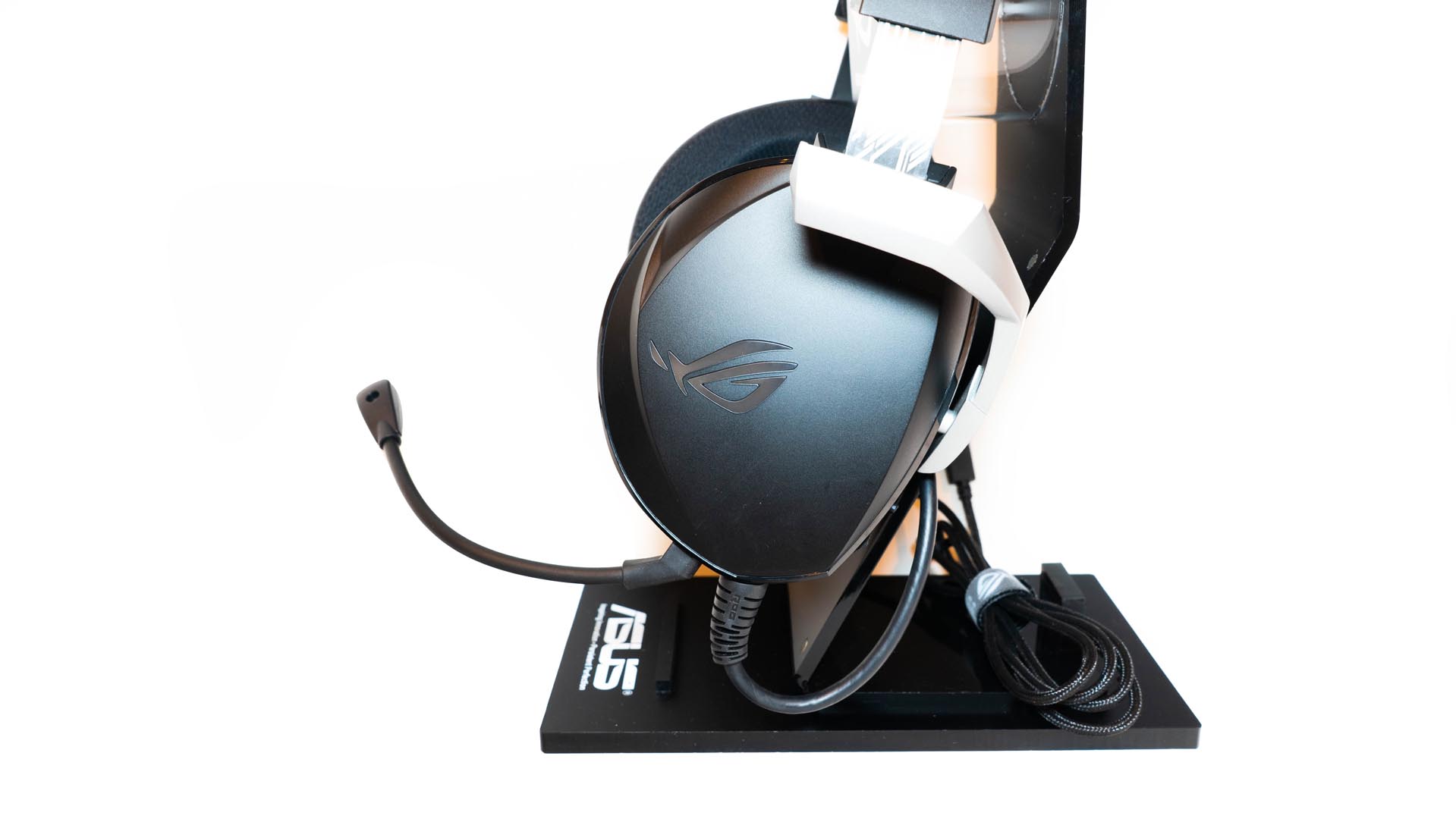


The headset weighs 604g, about twice as much as the Delta and 1/3 as much as the Centurion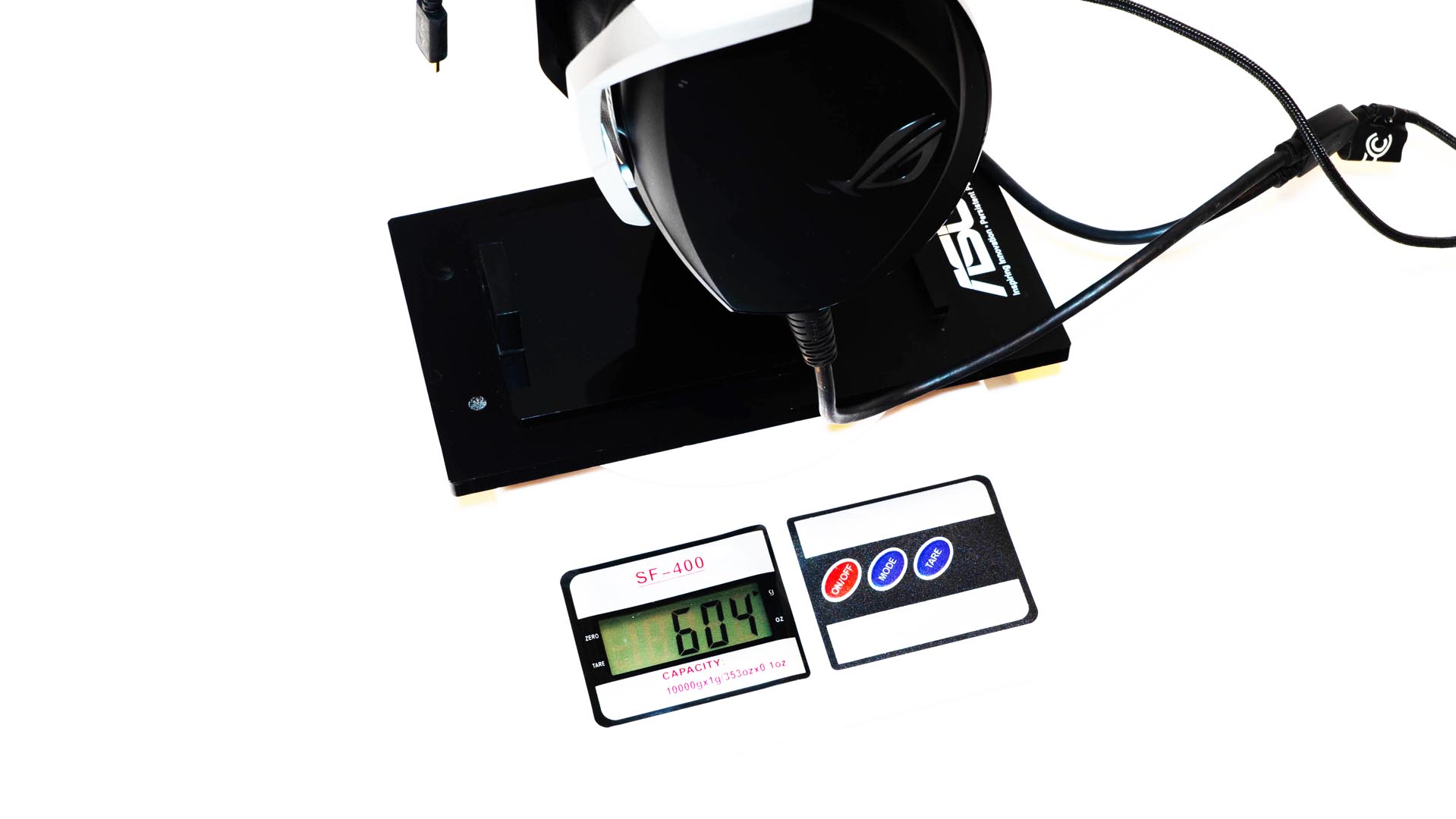
The Left and right symmetrical design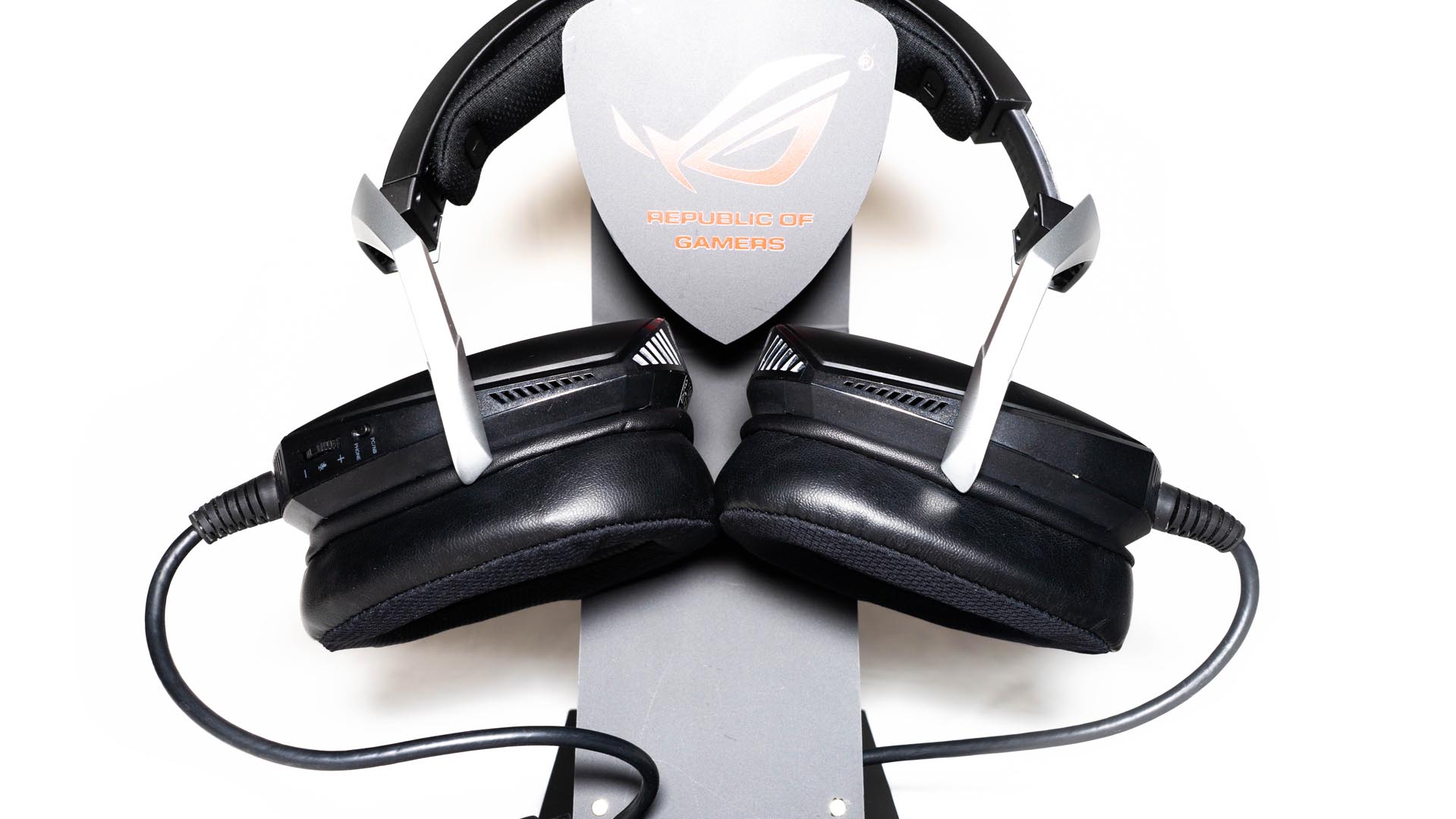
5-levels Headband expansion arm
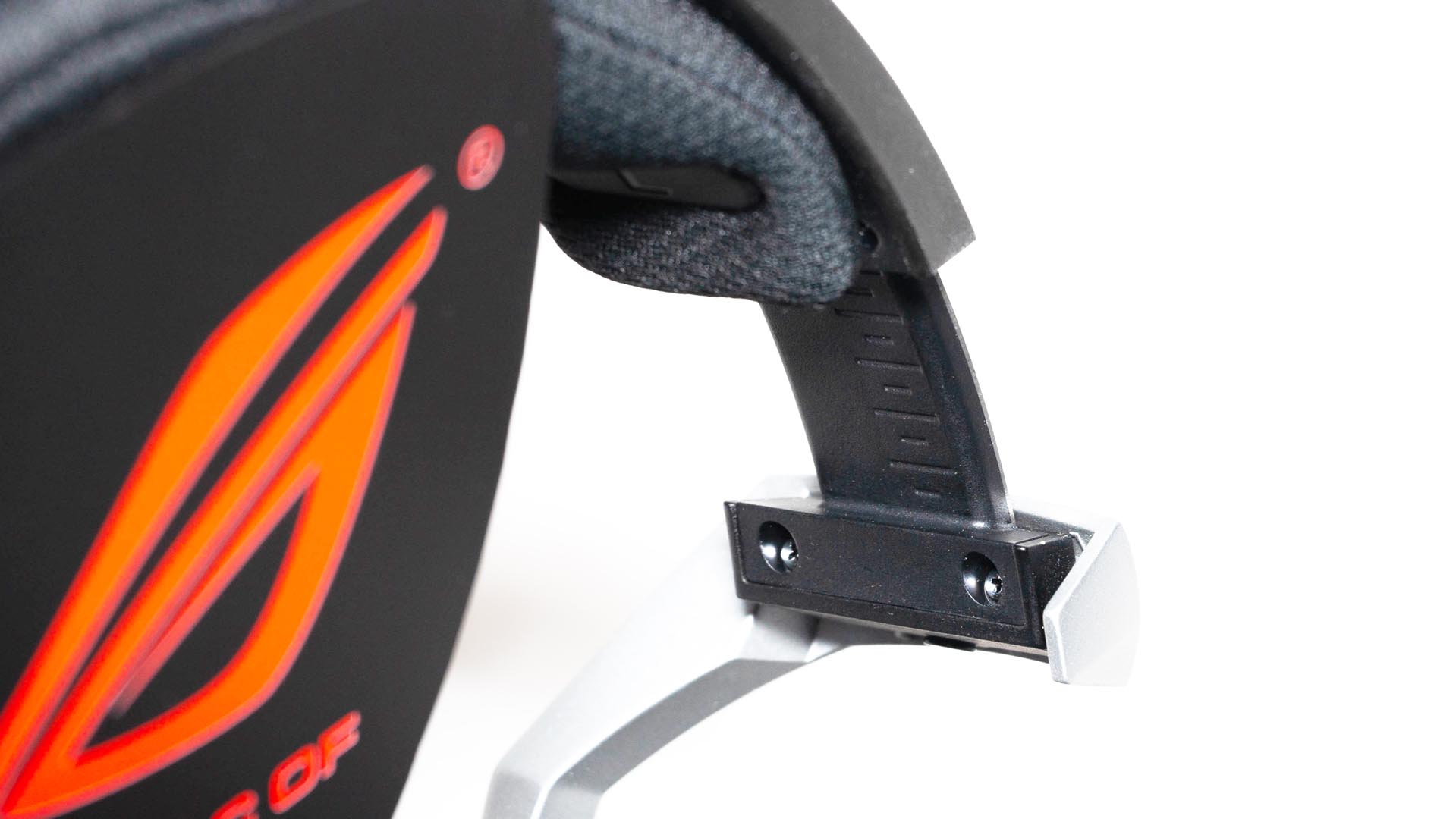
The rotating structure of the headset and its extension length

The extra-soft headband inside is a padded foam mesh fabric similar to the ROG Hybrid ear cups, which breaths well
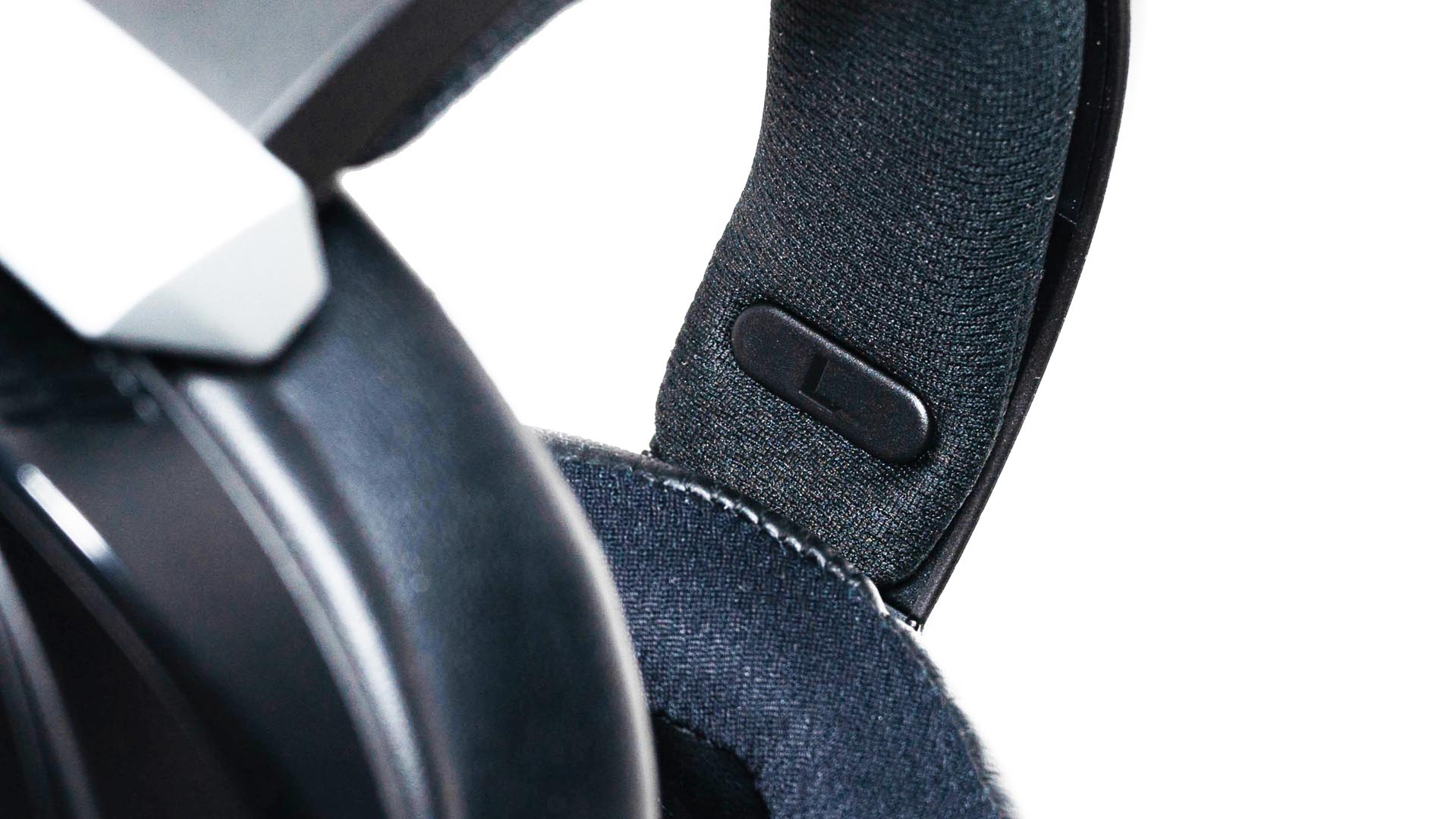
The famous ROG logo on the headband
The headset is complemented by a cooling grid on both sides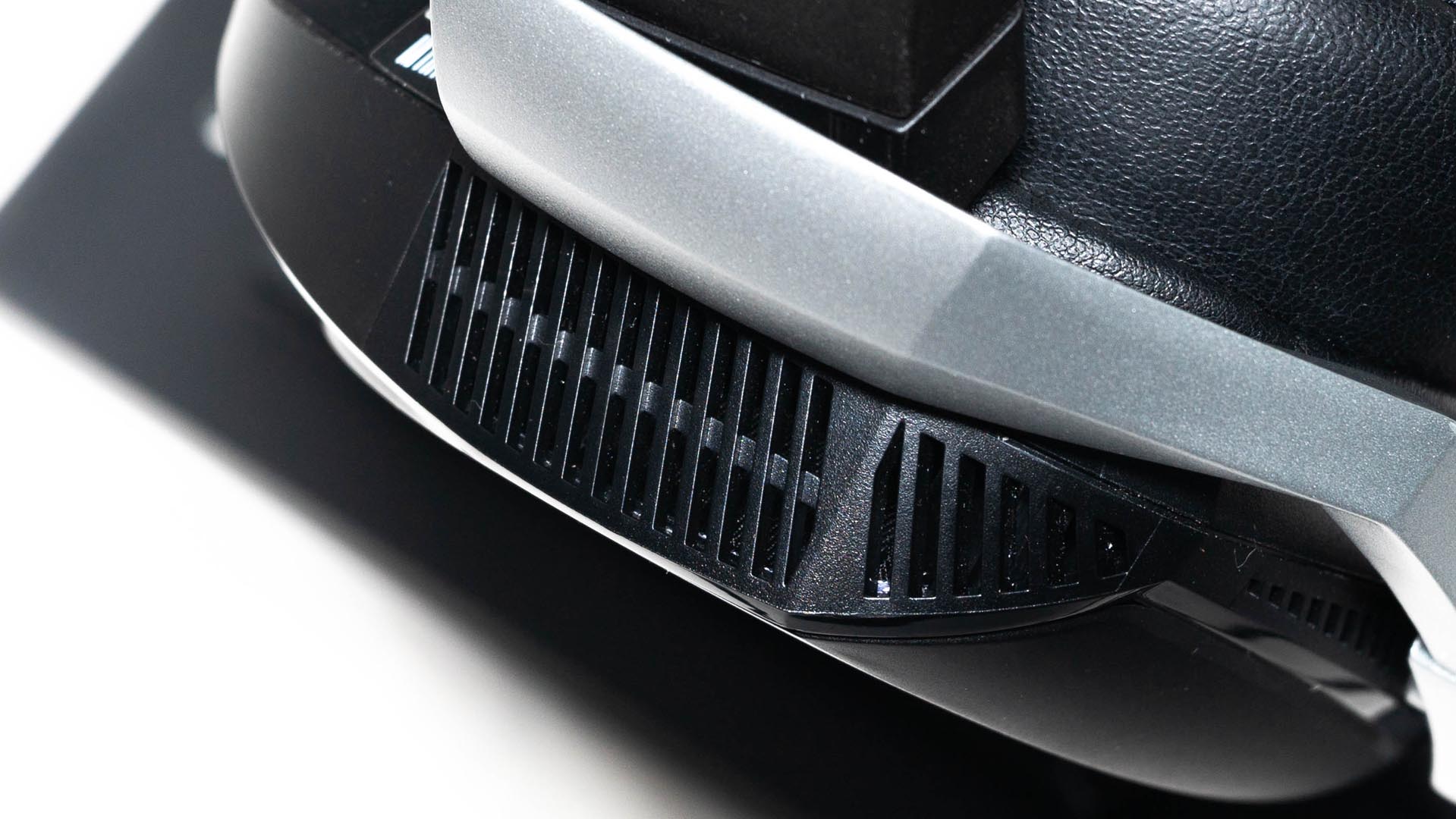
At the bottom of the right side of the headset, there is a slider for switching between PC and phone and a 2-in-1 microphone volume potentiometer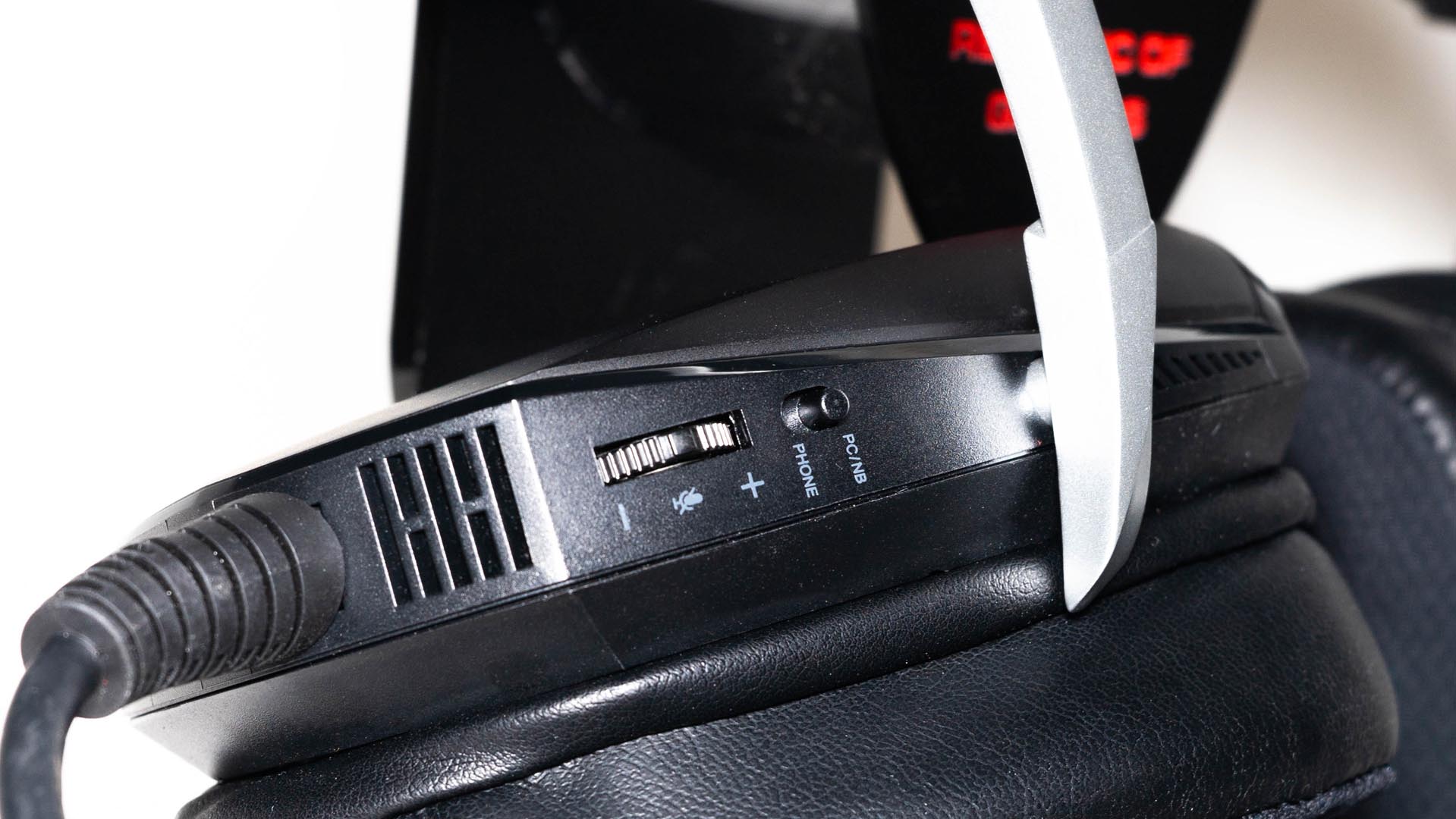
On the bottom left side of the headset, there is a separate microphone jack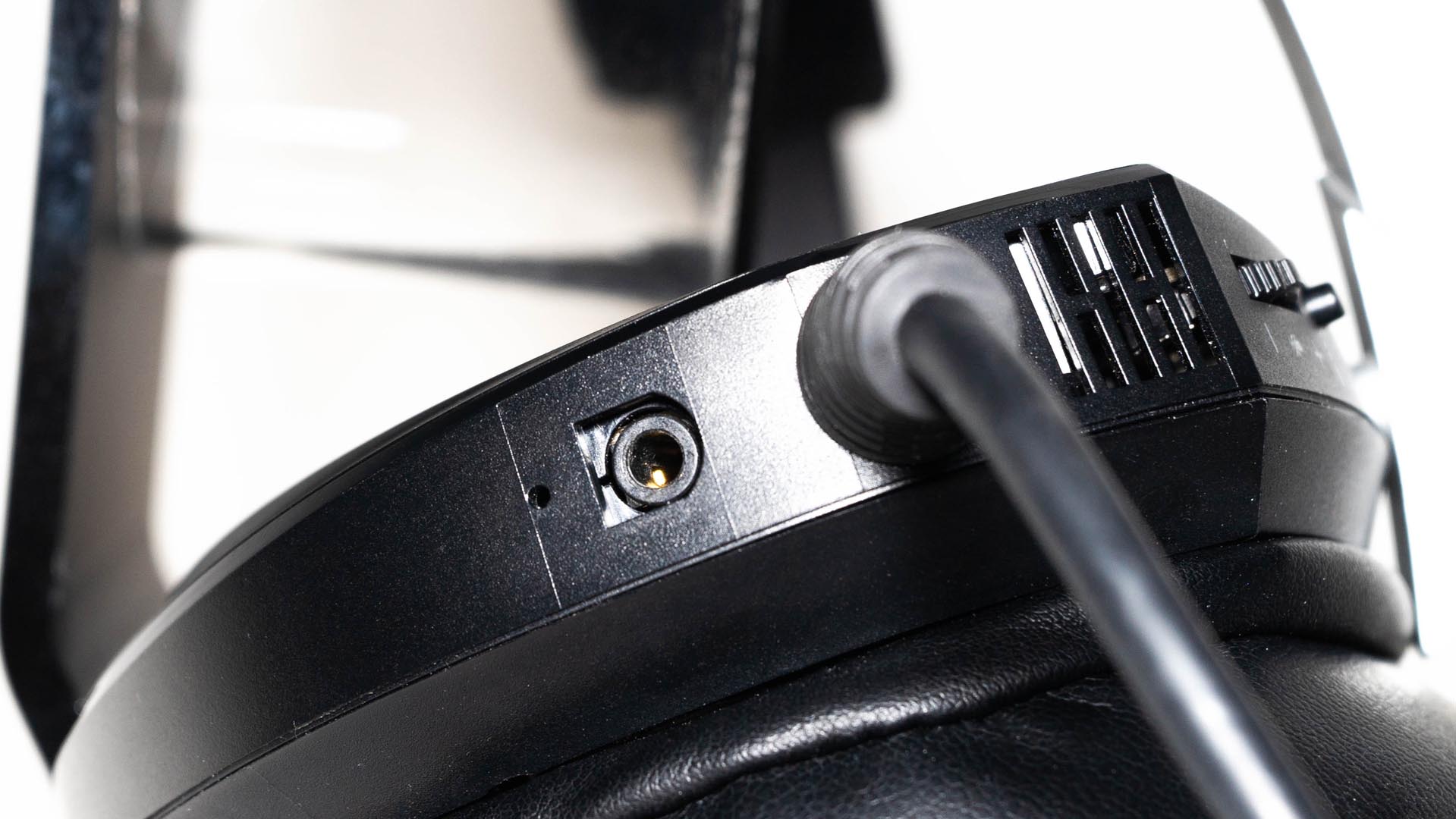
The D-shape earmuffs have a ROG logo integrated
The ROG logo with RGB translucency design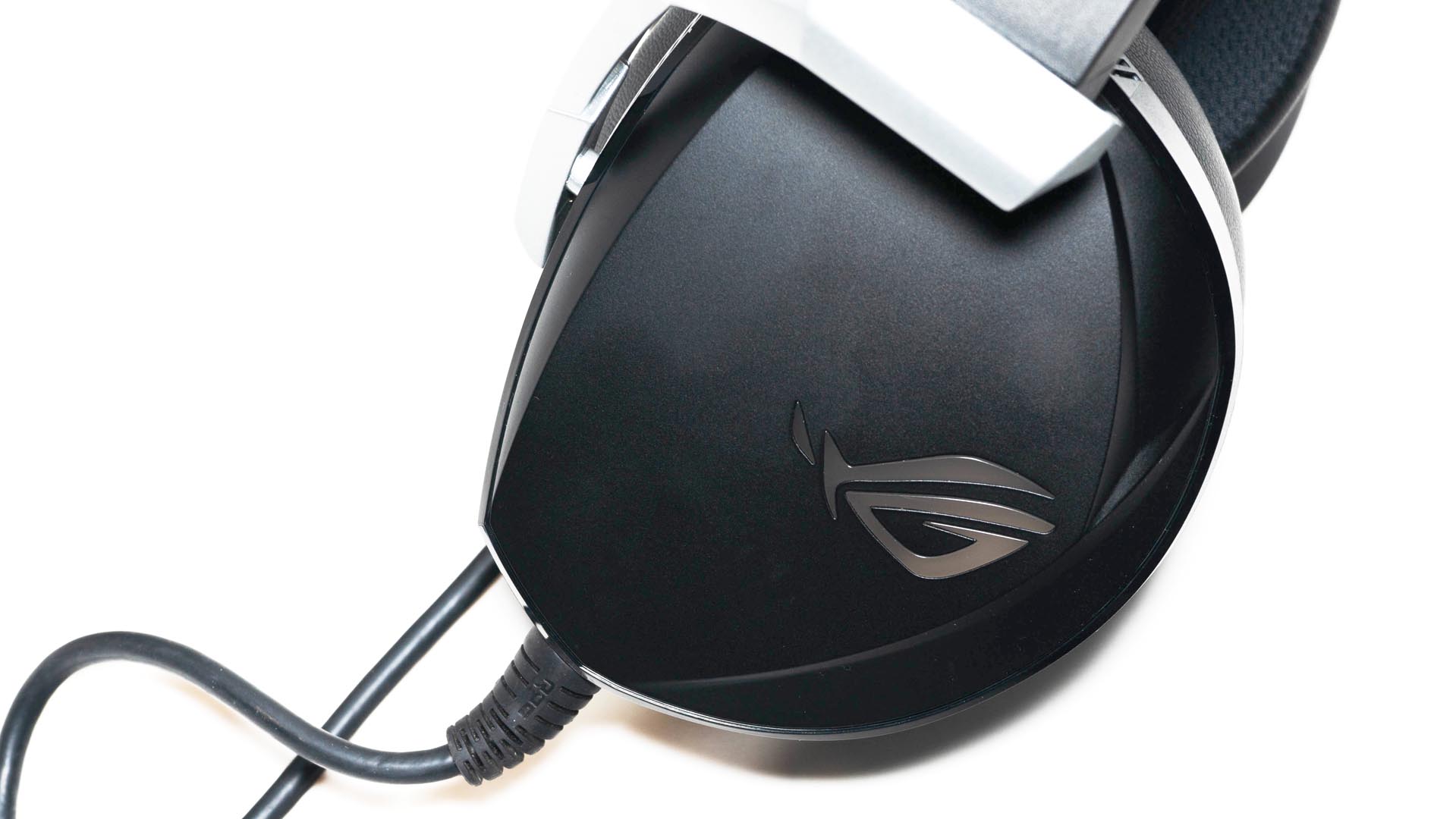
Software Analysis
Asus has integrated their peripheral controls into the ROG Armoury II software, if users are using an Asus motherboard, they can also use the Armoury Crate directly to control.
The main page of the control panel
Users can utilise this software to adjust almost all functions including Sampling options, EQ adjustment, bass boost, sound selection, virtual surround, channel selection and microphone AI noise reduction options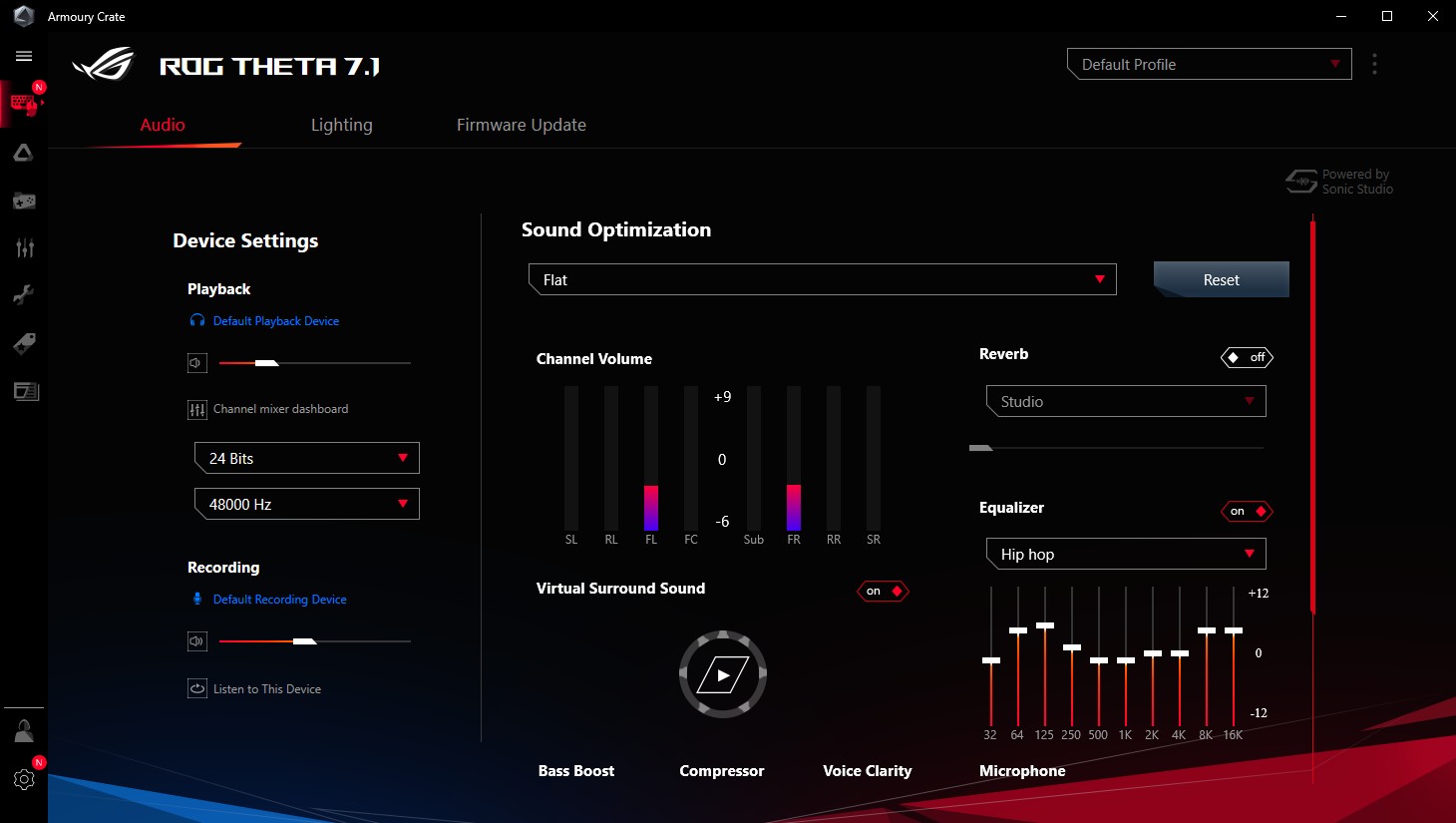

The RGB settings of the headset can also be adjusted under the Lightning tab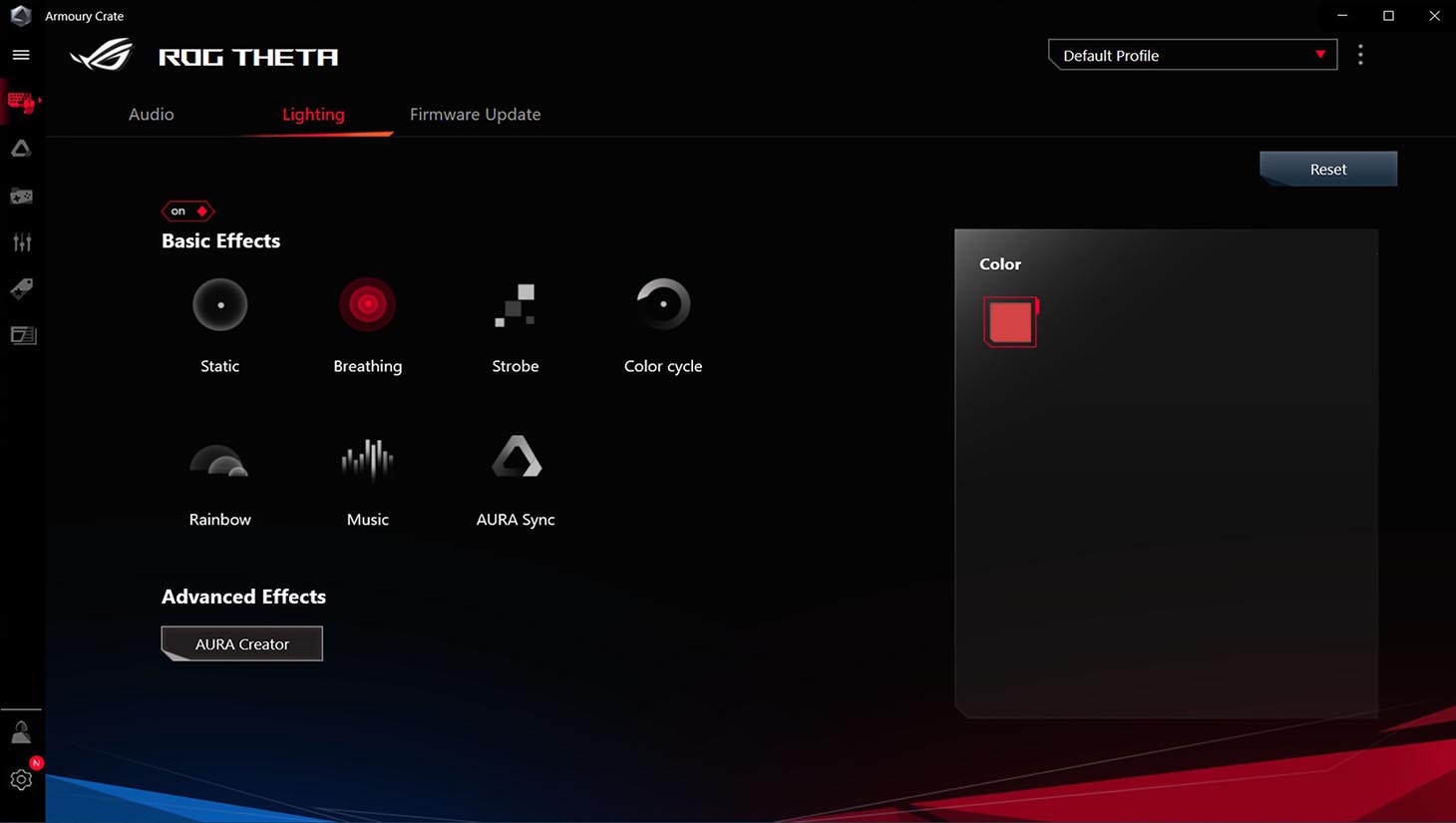
Disassembling Analysis
The greatest selling point of these headphones is the true 7.1 + separate DAC design. To see what’s inside, we decided to take it apart
The headphone unit part has to be disassembled from the inside of the rotating structure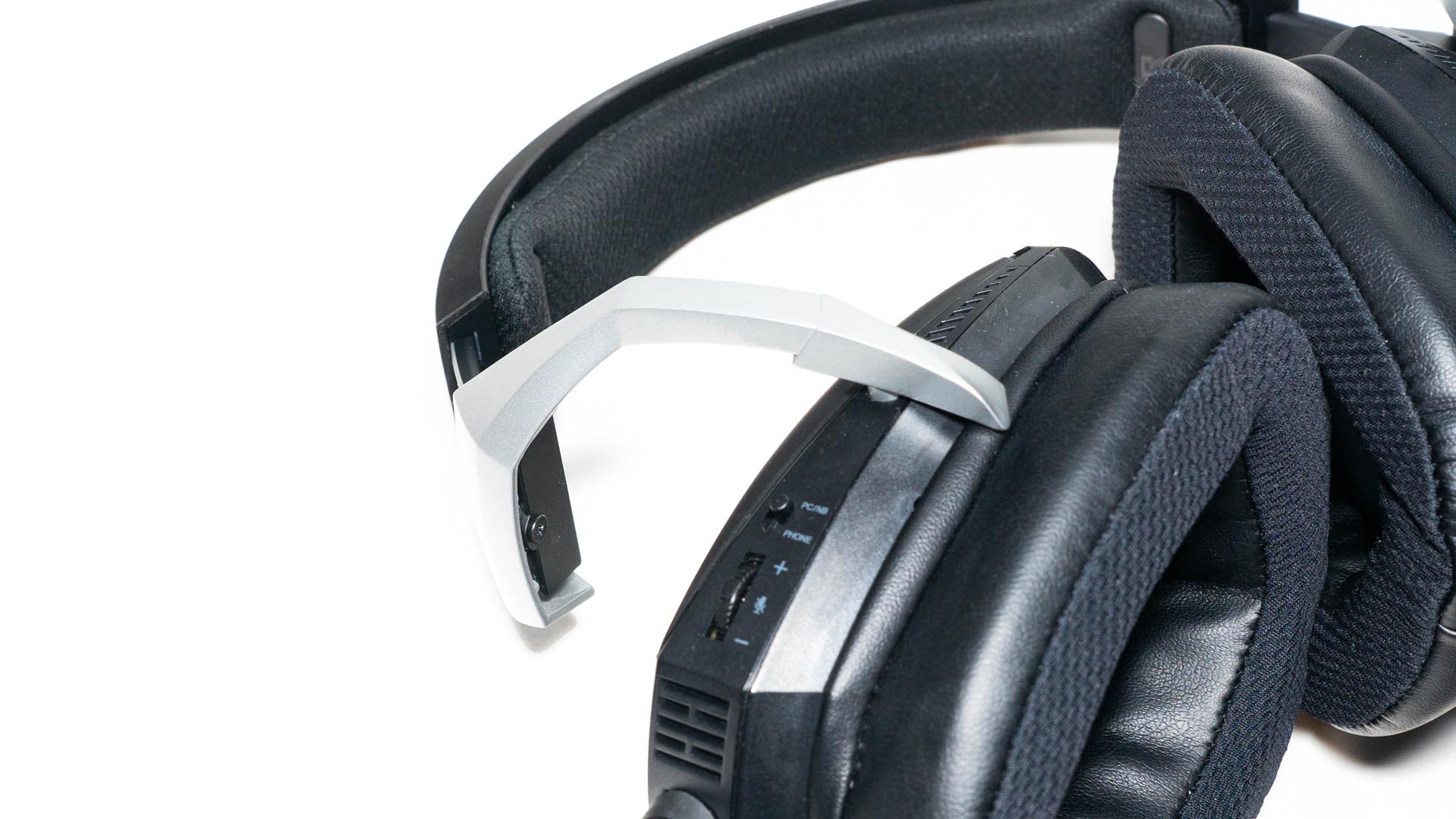
Snap-in construction of the headset section, locked by a Phillips screw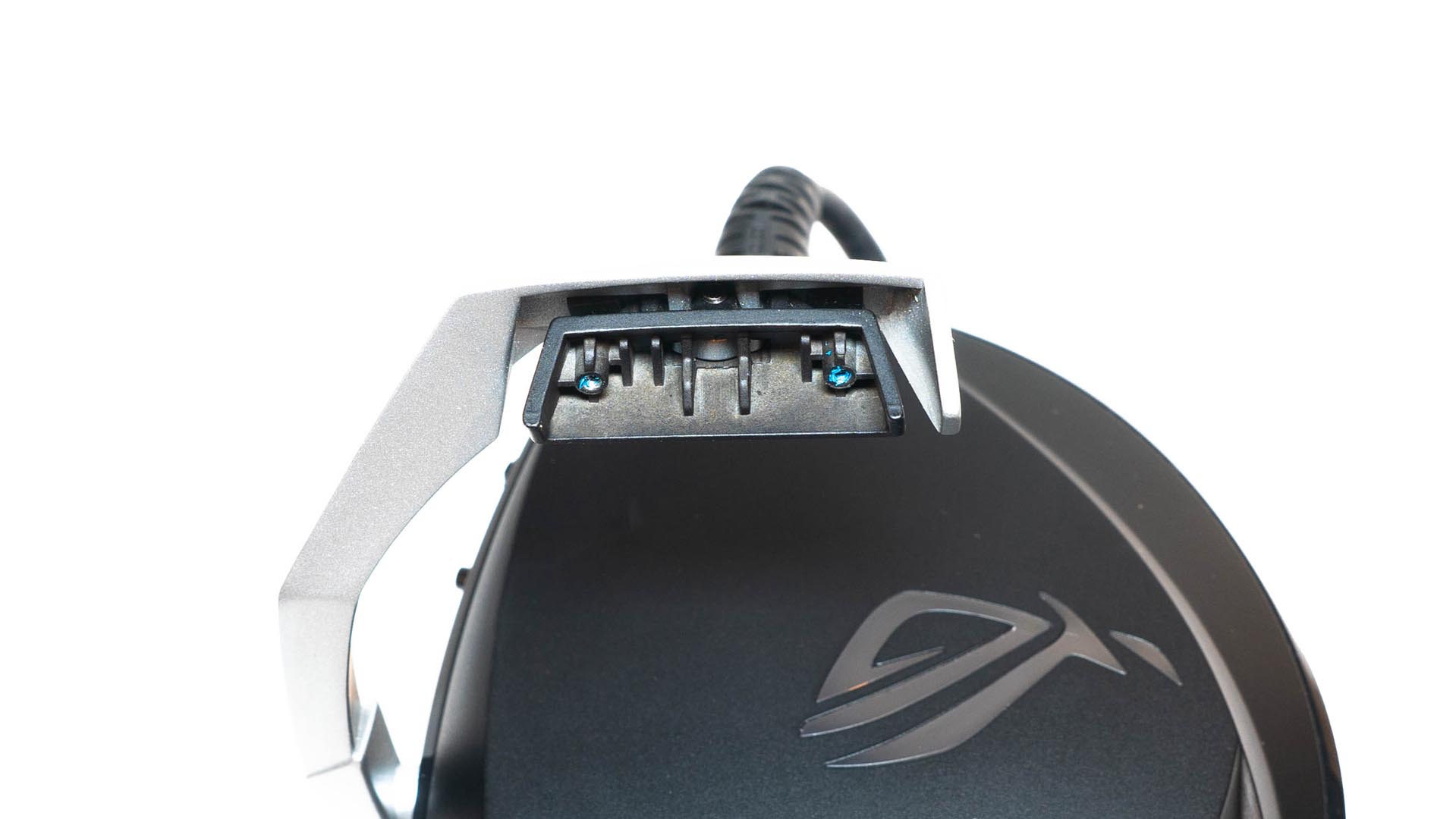

The extra pair of lightweight D-shape earmuffs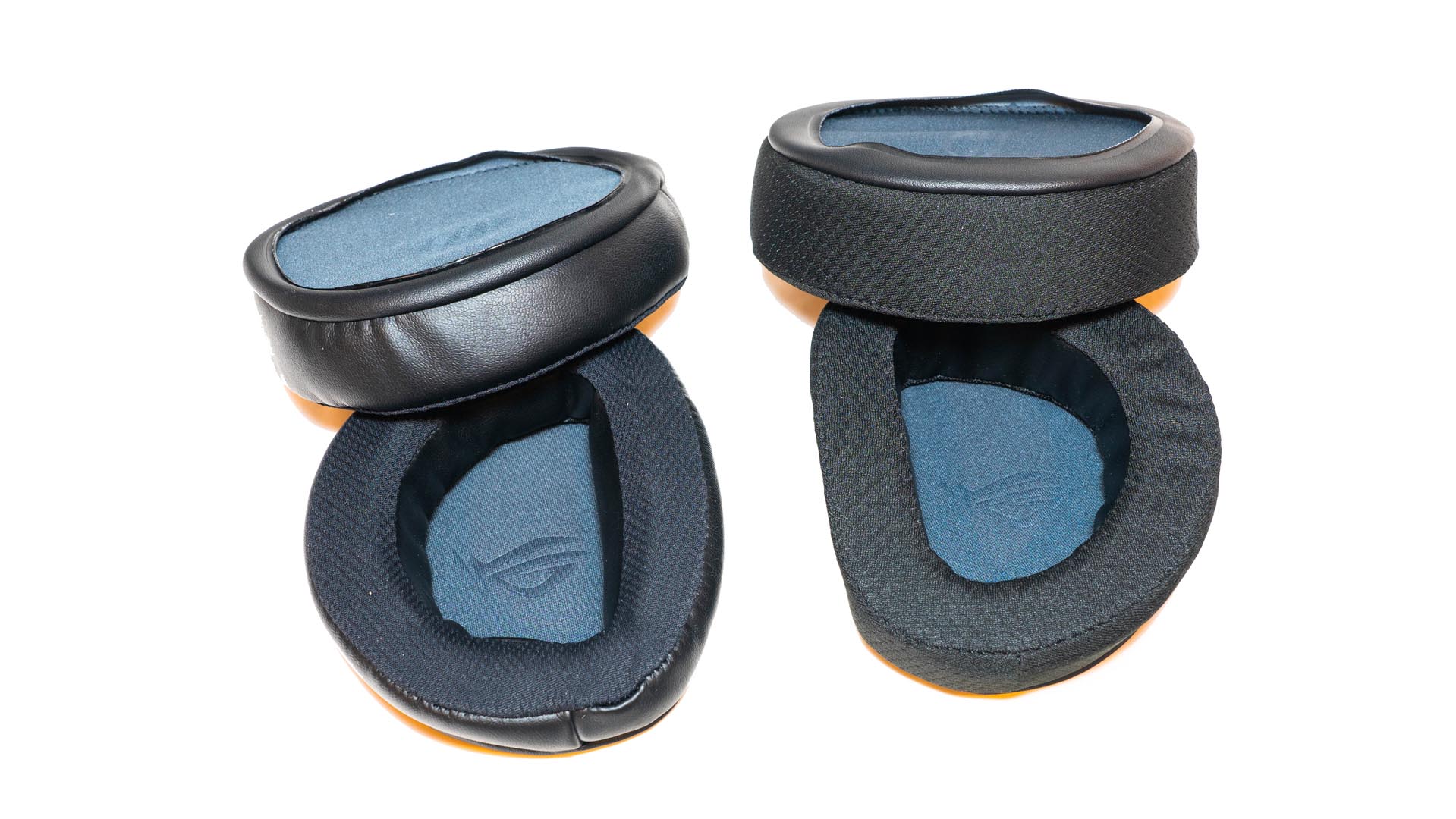
The body of the headphones, with the 8 units clearly visible. These are 40mm front units, 30mm centre units, 30mm left and right units and 30mm rear surround units. As all units are independently driven, the subwoofer section could be simulated by an algorithm, meaning that it is also sounded by these units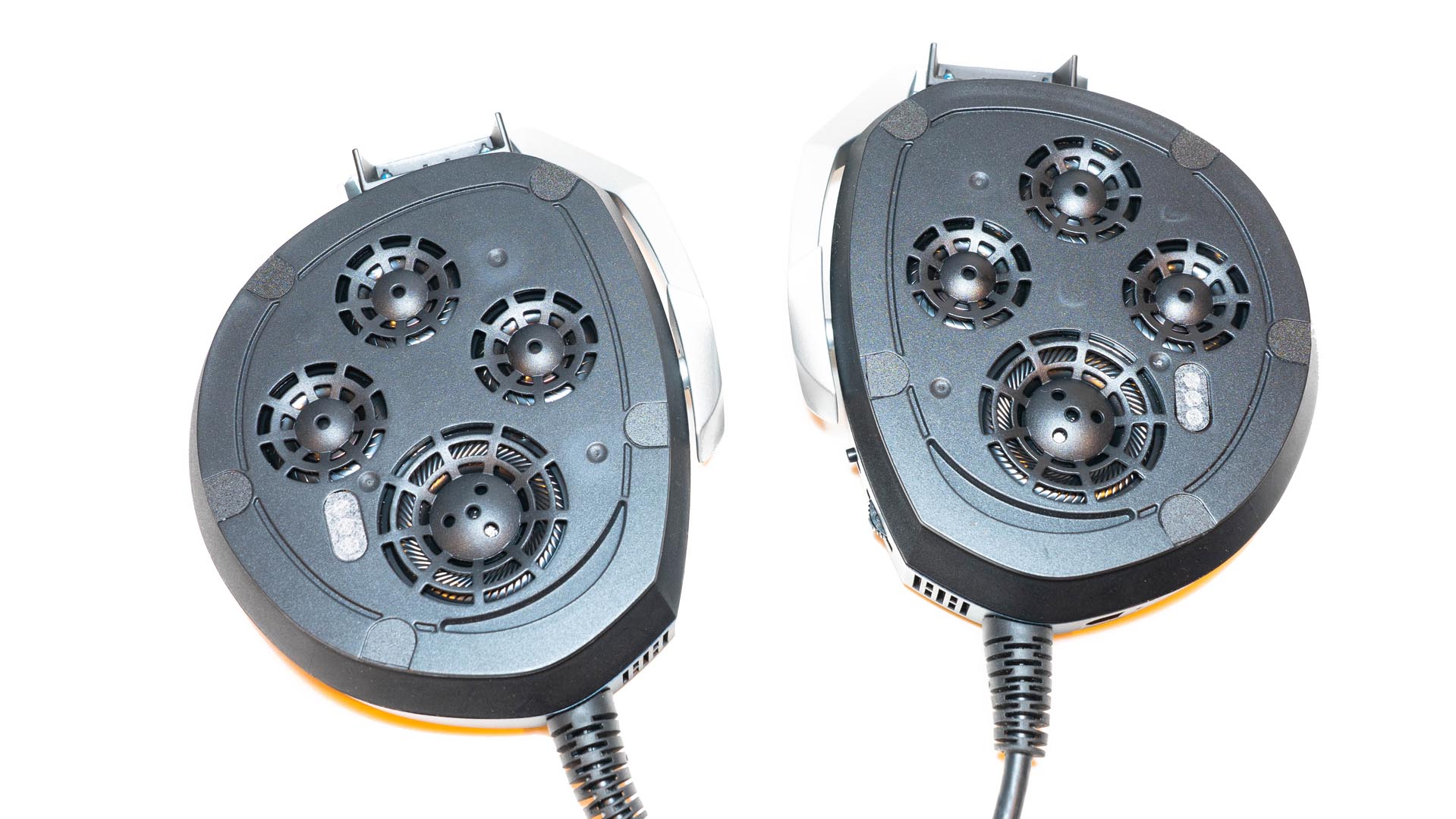
Remove the headset casing to reveal the motherboard components. The headset is a semi-modular design with relatively neat internal routing
Disassembly of the right half part includes rotating structure, motherboard and housing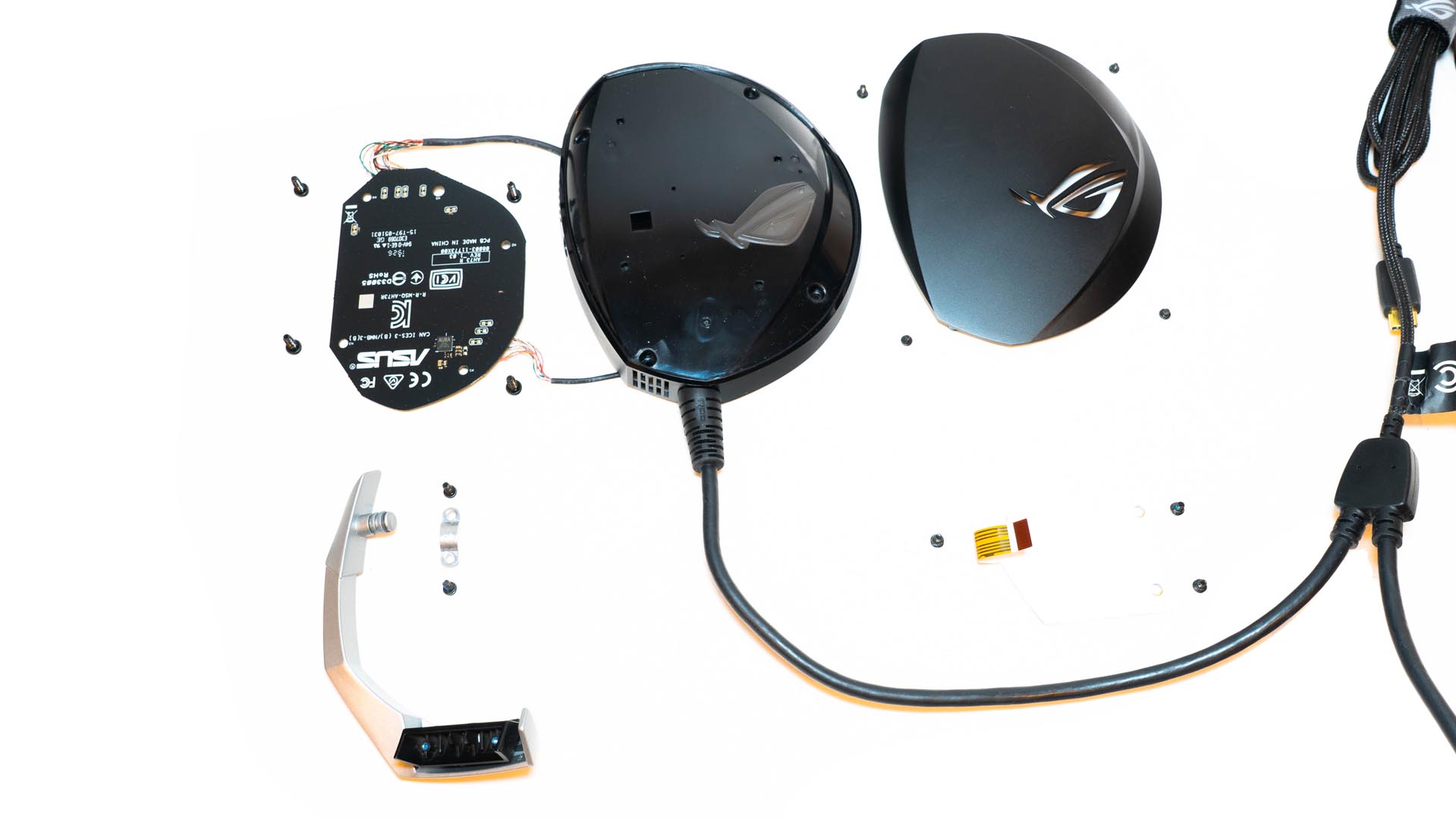
Disassembly of the left half part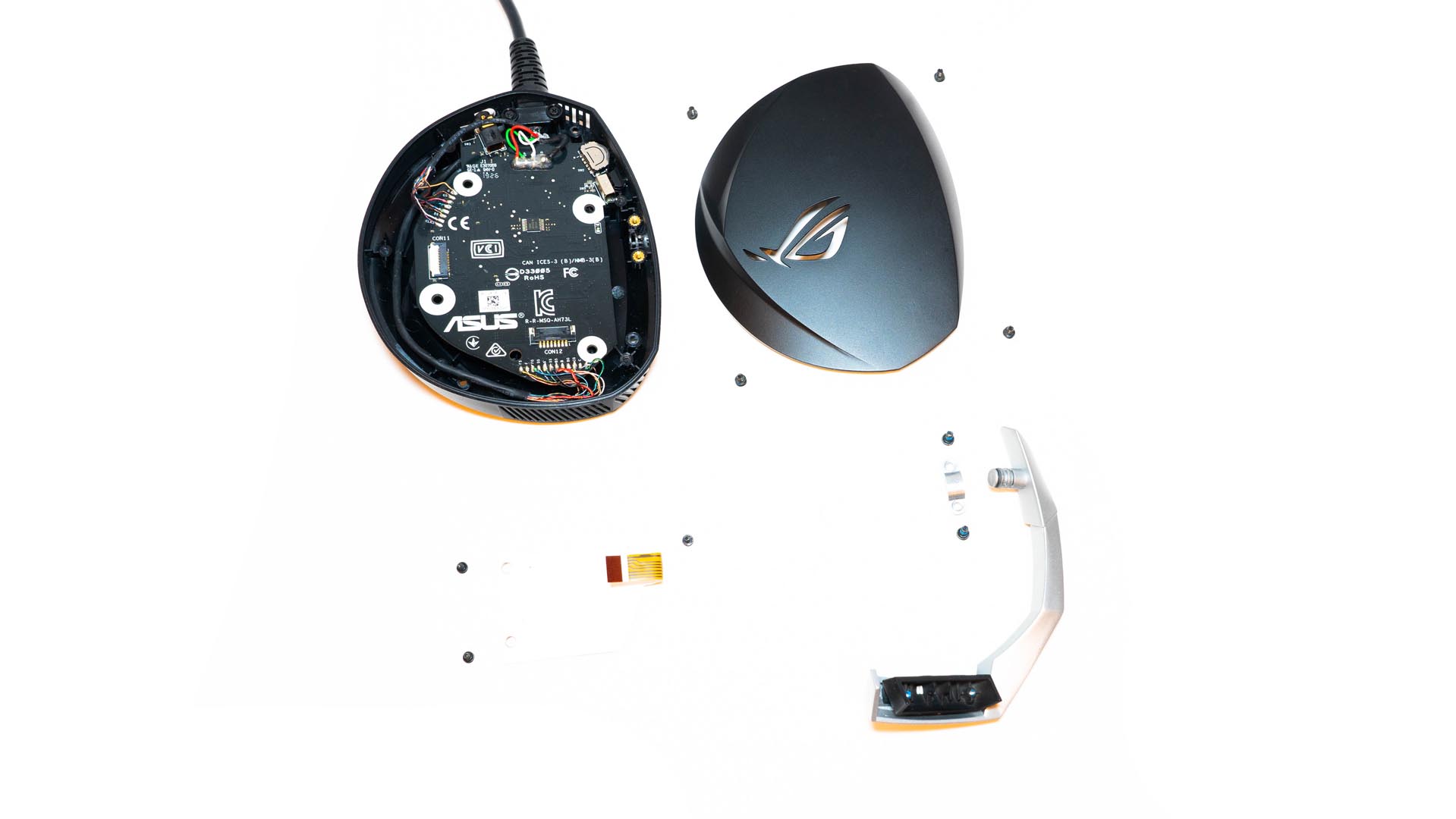
The motherboard model name and version number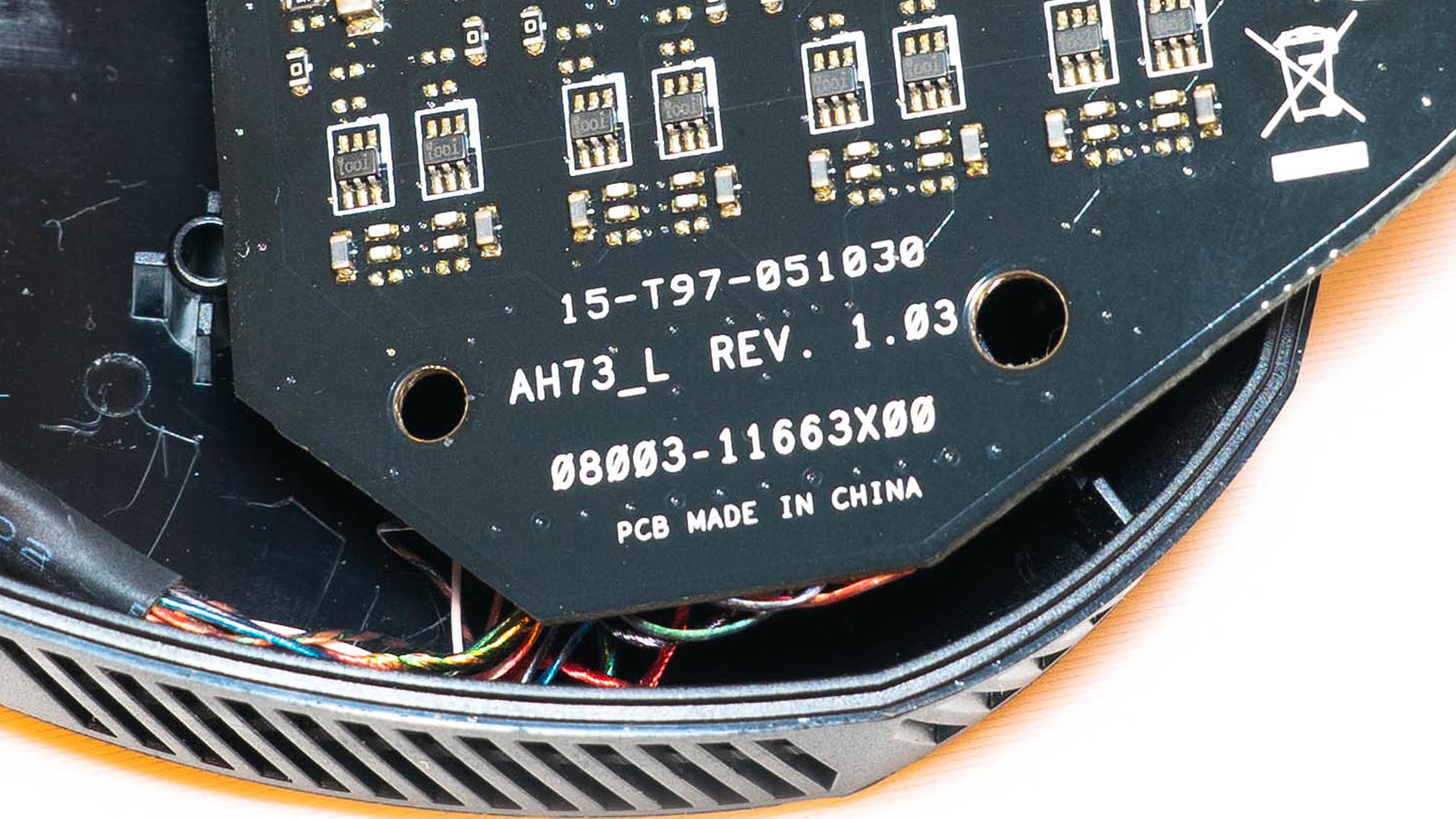
The AURA 82UA0 RGB controller chip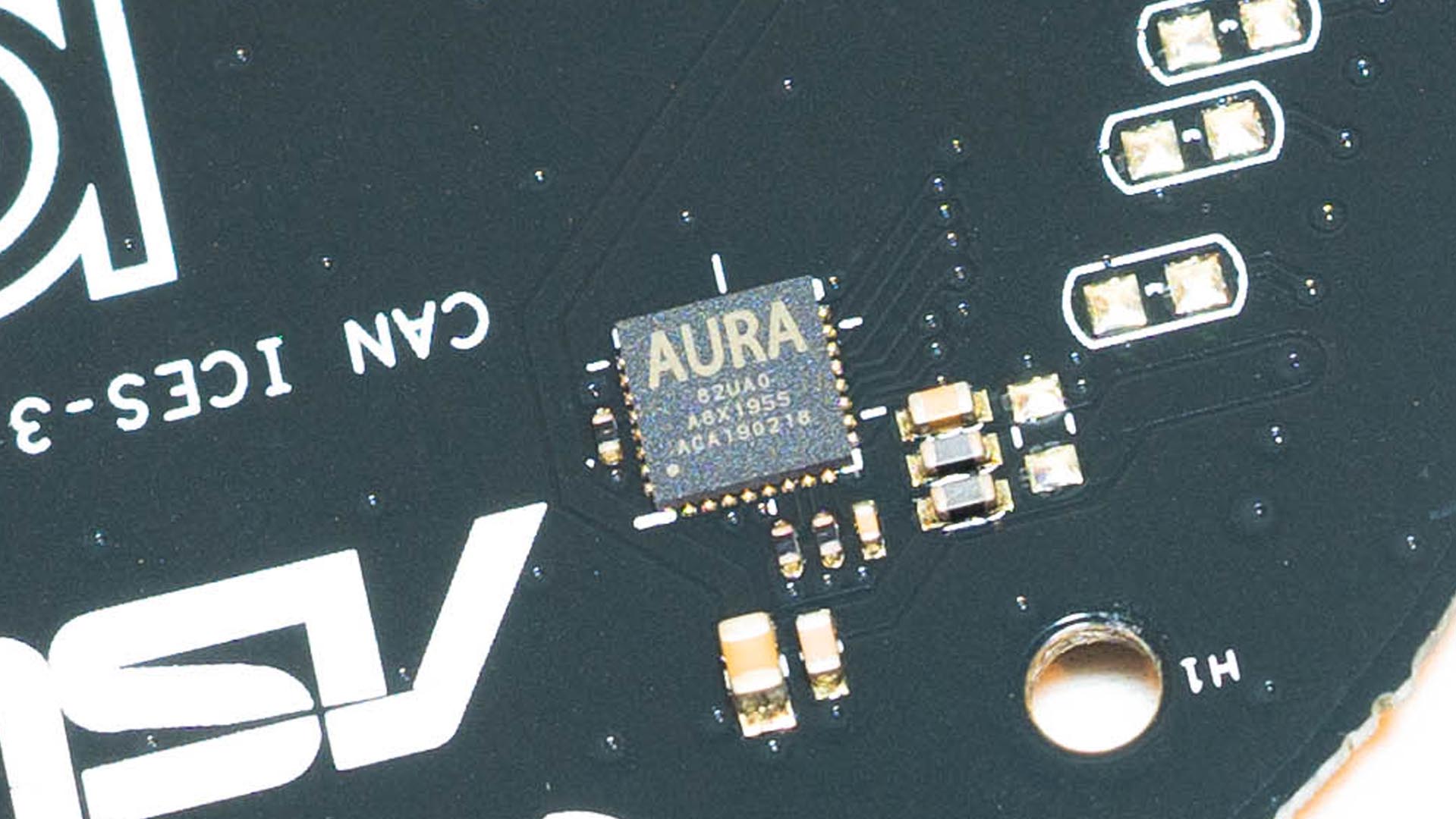
Potentiometers and diverter switches side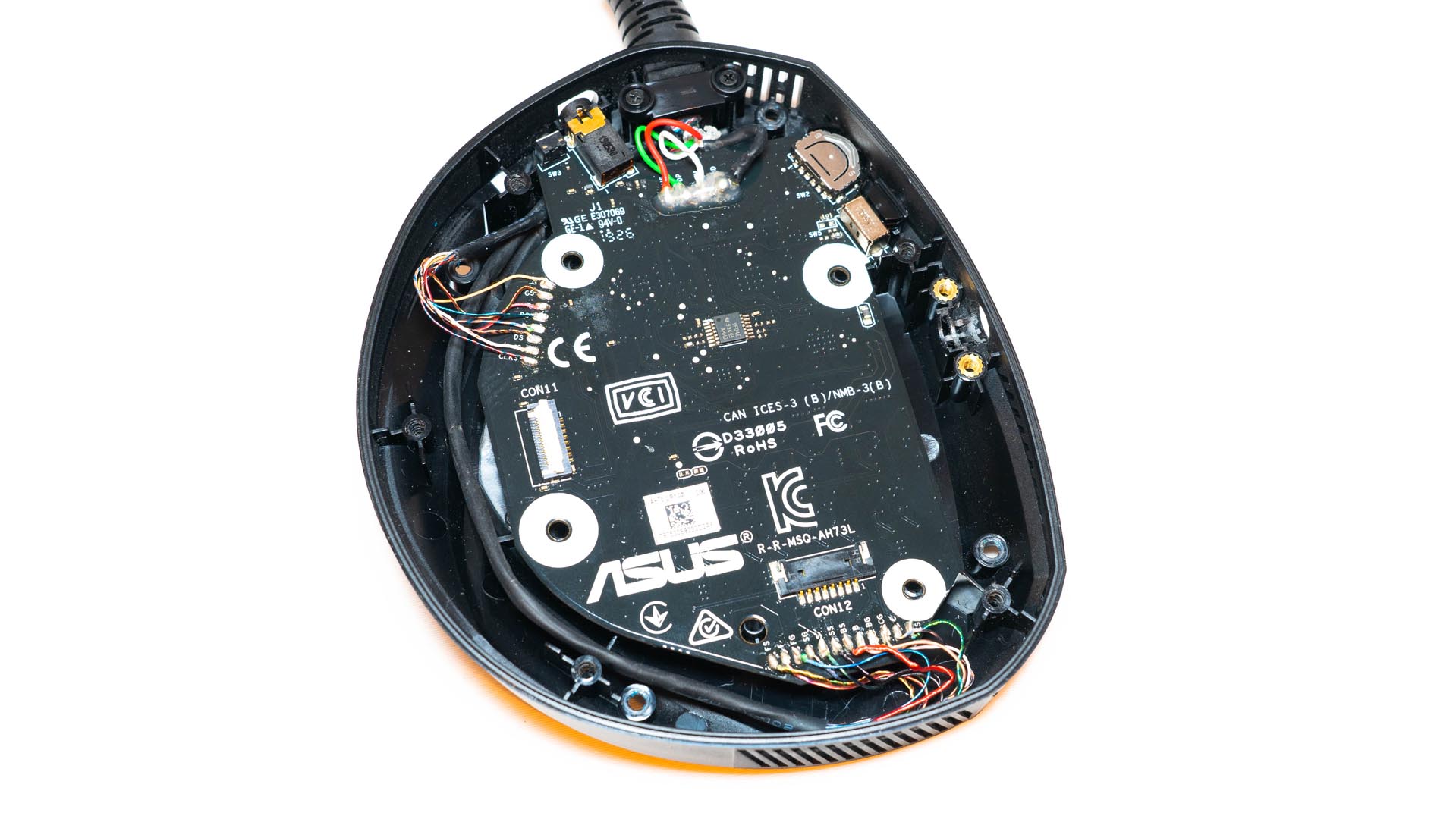
The SupremeFX CODECs S1220 conroller chip, Realtek ALC4042H QFN Audio CODEC IC and Wolfson WM8960G stereo audio codec driver chip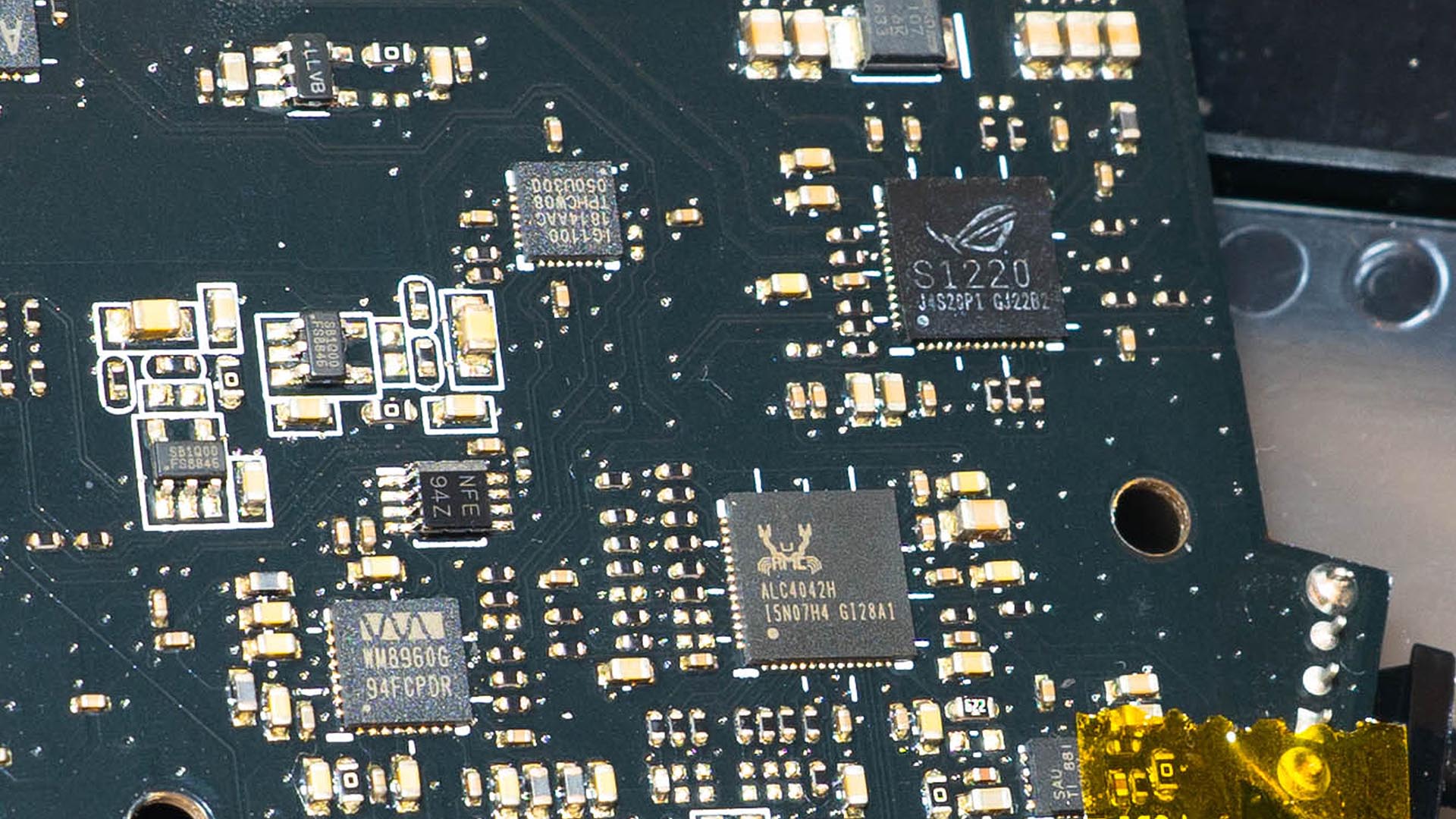
The Hearing Analysis
Test premise: EPIC PC does not compare the listening experience of PC peripheral headphones with Hi-Fi/Hi-End or Monitor-grade headphones. All comparative terms used in the test are comparisons between PC peripherals.
Compatability
This headset has excellent support and compatibility with the new generation of gaming consoles and mobile devices due to its Type-c interface.
On the Android platform, we tested with the ROG Phone 3. Because they are Asus’ own products, Theta 7.1 can be directly recognised by the ROG Phone 3 and automatically optimised to the game. Although PUBG Mobile does not support a 7.1 soundtrack, in-game footsteps are slightly amplified, making it easy to determine the location of enemies, and the reverberation of gunfire is great in terms of distance and proximity. And in ‘Genshin Impact’, players can enjoy the game’s high-quality music, vocals and effects. Theta 7.1 performs impeccably in both ‘Deemo’ and ‘Cytus II’, as well as ‘Lanota’.
The apple platform lives up to its nobility. To hear quality music on the iPhone with Theta 7.1, we not only need an expensive Hub with a Lightning connector that comes with a chip and has Apple certification, but we also need to purchase Apple’s hi-res lossless music service. With all these front-end items taken care of, we finally got a taste of the quality of these headphones on the iPhone, which actually doesn’t sound much different from the Android platform. Incidentally, the iPad Pro, which comes with a Type-c port, is also directly compatible with this headphone.
Listening experience
The audition tracks include popular male/female voices, rock music, small compilation strings, and large-scale symphonies. All Hi-Res quality 88200Hz 24bit, around 4kbps. This headphone is very well tuned to music, the high frequencies are not sharp and harsh but slightly softer, the sense of transparency is perfect, no EQ adjustment, the mid-range is rich and the resolution is very strong; the low frequencies are simulated but surprisingly thick and layered, good sinking, and no sense of passage and fading. Without EQ on, the vocals are relatively forward and the nasal resonance is very well reproduced; for pop songs, the vocals are slightly overshadowed by the instruments and seem underpowered; in classical music, the beautiful vocal performance in opera is outstanding, especially in the baritone, tenor and florid soprano, and in Mozart’s “der höllerache”(from “die zauberflöte” K. 620 II), Diana Damrau’s florid part brought me goosebumps, very stunning!
On Desktop/Laptop during gaming
To know that the ROG Centurion is already outstanding. Keep in mind that the ROG Centurion was already very good, while the Theta 7.1 upgraded the rear and side speakers to 30mm, but neutered the original 40mm subwoofer and changed it to a virtual approach, making the bass, while present, underpowered by its shorter duration. In the FPS genre, the headset reinforces the weighting of footsteps and players can reinforce their judgement with the ability to adjust the position of the surround points in the software, while the AI noise-cancelled microphone does filter out the noise of keyboard taps to ensure efficient communication between players. This is equally suitable for RTS and MOBA games. In theory, larger units can improve the quality of fine sound, but in games, it actually has very little impact, as the sound is calculated by simulation and is a collaboration between several units, the difference is actually minimal when distributed evenly. To sum up, if you already have a true 7.1 headset like the ROG Centurion or Razer Tiamat, the relative improvement of the Theta 7.1 is considerably limited.
Overall
Overall, Theta 7.1 doesn’t bring a quantum leap in the gaming experience because its predecessor, the ROG Delta, was already quite good and because most current competitive games don’t support 7.1 surround sound. Since Virtual 7.1 was already at the top of its game a few years ago, the upgrade to Theta 7.1’s DAC is only icing on the cake. The relatively heavy weight also reduces the player’s immersion, increases fatigue, and puts pressure on the cervical spine. It also means that Theta 7.1 will not be chosen by true gaming players at all.
When it comes to the price, the AU$549 “price tag” will dissuade the majority of consumers, and perhaps the quality of this extreme material build-up will be perfectly unleashed in a AAA gaming masterpiece. Even though Theta 7.1 has great compatibility and can be used across multiple platforms, it is still a wired product. As the quality of this headset is already top of the line in the PC peripheral world, with luxurious materials, multiple device support, a high price tag and ROG’s faith added, limiting the users to high-end gamers with deep wallets. Asus has rarely innovated in terms of peripherals anymore, will such a ROG series continue to capture the hearts of all gamers or will it gradually fall by the wayside with the brand premium? It’s up to the gamer to choose in the future.
EPIC REWARD: EPIC DESIGN AWARD, EXTREME POWER AWARD

ASUS ROG THETA 7.1 OFFICIAL WEBSITE: HERE



